
CERT RESPONDER MAGAZINE ® sUAS Search and Rescue Serving Those Who Serve Their Communities Winter 2018-2019 Incident Coordination Winter Heating Safety Fort Lauderdale Special Section: CERT Rehab Operations Award Winning CERT Team



Mission:


CERT Responder Magazine is dedicated to providing CERT and first responders with information and tools to assist communities in times of crisis, as well as offering a platform for responders to share their stories.
Staff
PUBLISHERS: Bob Abrams, Fran Sherman Chris Wahoski
CONTRIBUTING WRITERS: Edward M. Beirne, Erica Lowther, Joshua W. Maddox, Jay Manley, Frank Miller, Mark Miller, Brittany Perkins Castillo, Brett Postelli, Emily Rosenblum, Linda Spall, Tom Sullivan, Jim Walker
EDITOR/CREATIVE DIRECTOR: Fran Sherman
DIRECTOR OF MARKETING: Bob Abrams
OFFICE MANAGER: Chris Wahoski

06 24 14 08 16 20 22 24 05 09 10 12 18 33 19 34 Departments Features
Inside
Special Section CERT Rehab Operations Award-Winning CERT Team: Fort Lauderdale sUAS Search and Rescue Incident Coordination Winter Heating Safety The Santa Ana Winds ®CERT Responder All rights reserved. Photocopying, reproduction, or quotation strictly prohibited without written consent from the editor or editorial committee. Unsolicited material and/or correspondence cannot be acknowledged or returned, and becomes the property of the CERT Responder. The purpose of this publication is to provide a quality publication that educates, informs and connects the CERT and first responder community in the time of crisis, as well as offering a platform for responders to share their stories. To provide comments about CERT Responder Magazine, contact chris@certresponder.com. Product Spotlights Book Review Teen CERT CERT Spotlights AshBritt’s Safety Corner Why Knot? CERT on the Road Marketplace The official publication of CERT Responder Magazine, LLC. CERT Responder Magazine 629 Salt Lick Rd St. Peters, MO 63376 www.certresponder.com To contact to editor Fran Sherman, send email to fran@certresponder.com SUBMIT YOUR STORY: certstories@certresponder.com ADVERTISE: advertise@certresponder.com SUBSCRIBE to CERT Responder:
Let’s Talk Safety Glasses Winter Dangers
www.certresponder.com/subscribe
Letter from CERT Responder Magazine
Dear Subscribers,
We want to wish you a happy holiday season and a wonderful 2019.
As we reflect on 2018, we want to thank you for your loyalty to CERT Responder Magazine. We want to thank all who have contributed stories, pictures, ideas, and information related to the CERT community and like groups. It is your compassion and commitment that keeps us focused and motivated to provide you with content and information that help you with your cause.
Moving into the new year, we would like to hear from you about stories you would like to see, and your comments on past issues as well. Please take a minute to email us at certstories@certresponder.com and share your thoughts.
Also, please send us any humorous anecdotes and/or pictures that we can share in the magazine.
Thank you again for all you do for your communities and for your support! Share CERT Responder Magazine with your teams and visit us on Facebook “Cert Responder Magazine”.
“Serving those who serve their communities” CERT Responder Magazine
4 CERT Responder Magazine
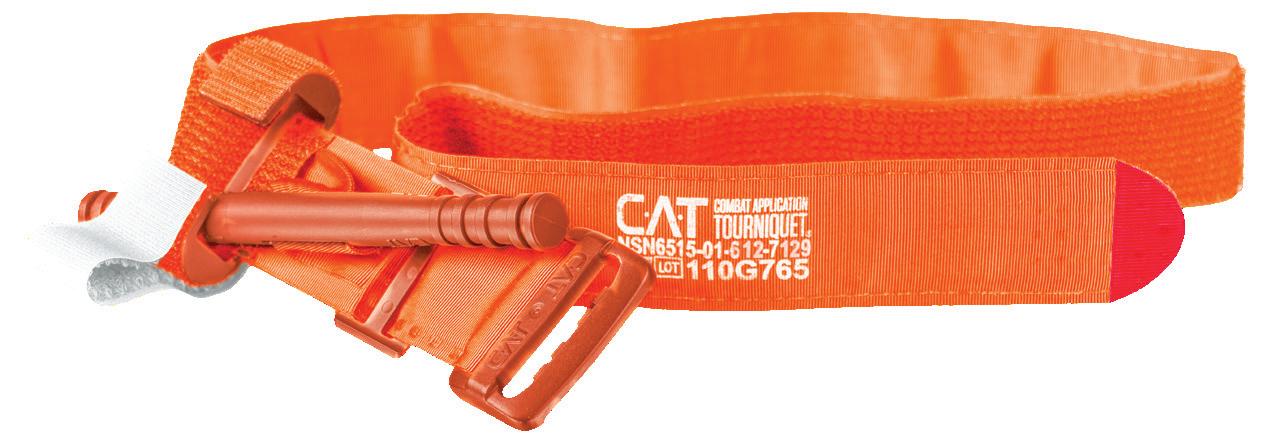
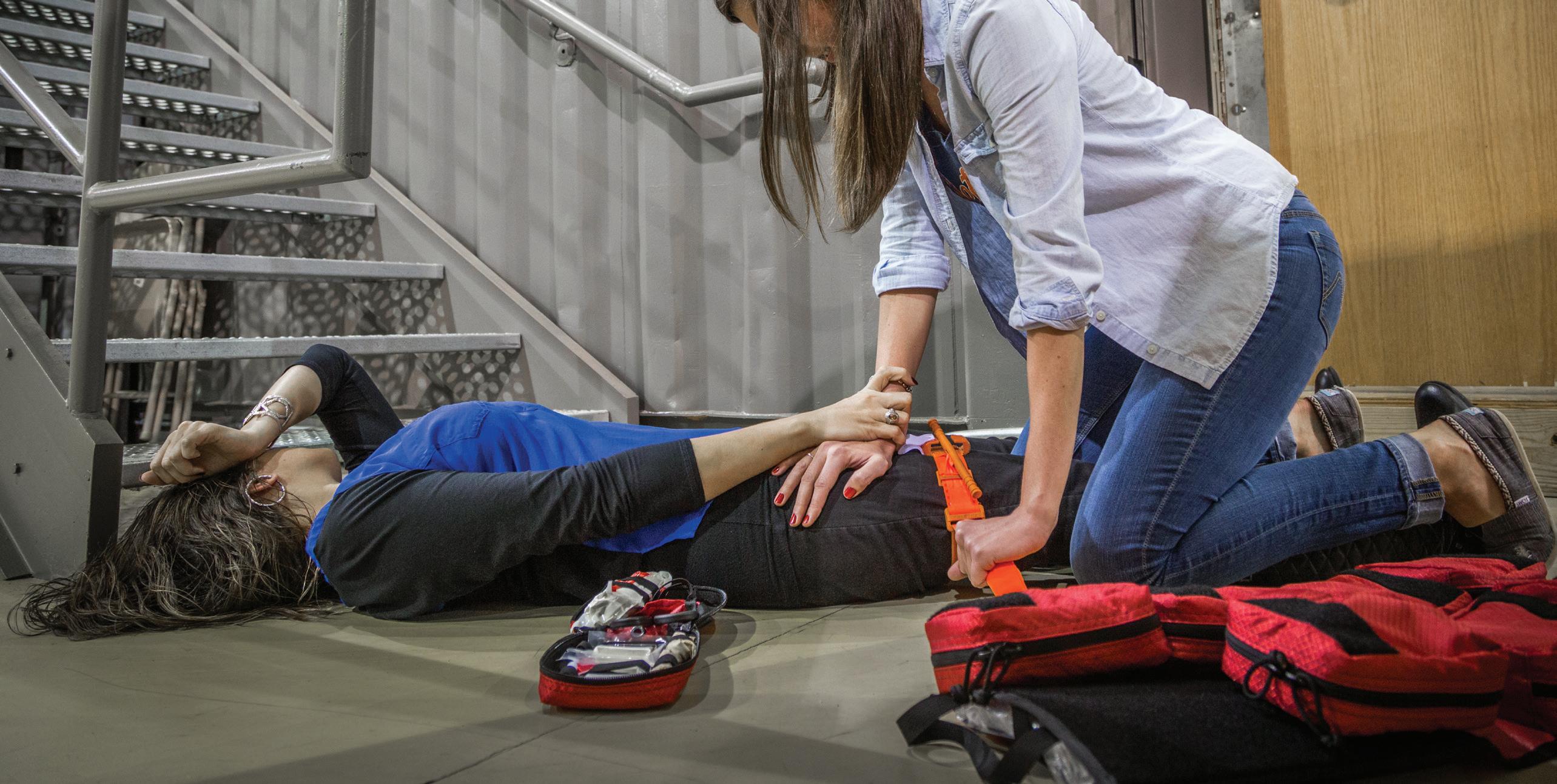
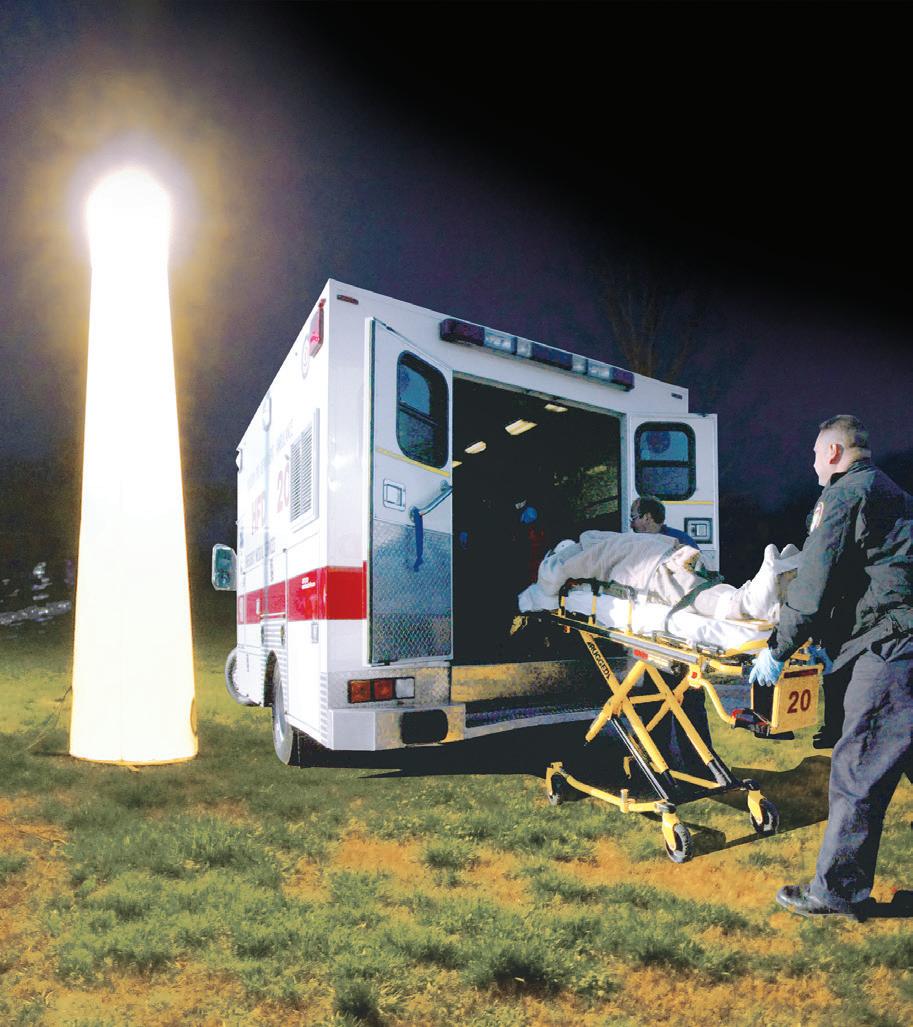



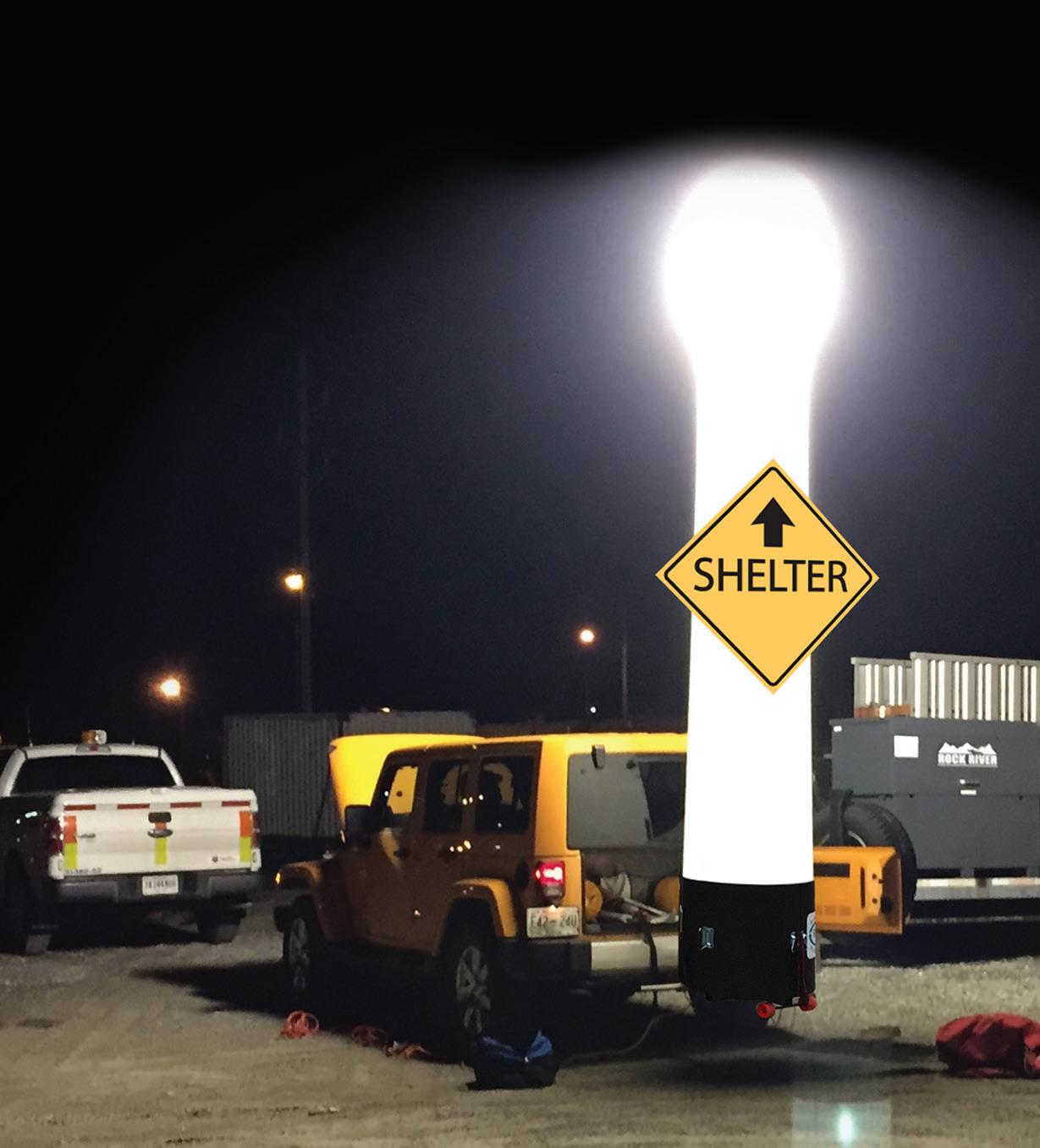
CERT Emergency Lighting 800-308-0994 propacusa.com Inflatable Light Towers • Lightweight • Powerful • Affordable Dragon Series Light Towers Mount to vehicles for transport and deployment. Attach to hitch receiver or permanently mount to emergency vehicle. Item X1158 LightHouse Series Light Towers 6 Models Available Item X1150 Portable LED Scene Light Hand carry, rapidly deploy to 6 ft high 3600 lumens of light power AC/DC Rechargeable Item D5142 6 ft One person can carry and set up these inflatable light towers in minutes. Illuminate a wide area 360° with up to 110,000 lumens light power. Internal fan inflates tower in 20 seconds. Ideal for emergency response, search and rescue or any scene that needs a quick, powerful and convenient light source. ® ® INCREASE Survivability Trust the Fastest, Safest, Most Effective Prehospital Field Tourniquet... REV080918
WINTER DANGERS

Someone sent me a video showing exactly what to do if you fall through ice and into freezing water. What a smart thing to know. Would you know what to do if it happened to someone in your close proximity?
Winter is here. Do you know what to do in winter’s unique situations? It’s not just about the outside hazards of weather! How about the illnesses, faulty electric blankets, candles and holiday lights. CERT Responder Magazine wants to keep you safe and smart, especially if you are out on a call, directing traffic or simply walking on a sidewalk or at home with your family.
6 CERT Responder Magazine
BY LINDA SPALL
BE PREPARED
Take your cell phone! Have an emergency kit in your car or attainable. Flashlight, gloves, sand or kitty litter to help if you need traction, flares, washer fluid, blankets, water, your first aid kit, emergency snacks, and a whistle! You may think it won’t happen to you. Maybe it won’t, but it might be useful to someone who needs your help. Having a CERT bag in your car is always a good idea.
DIRECTING TRAFFIC
You need good gloves, insulated long underwear, wool socks, foot and hand warmers, insulated hat and a face mask, and lip balm! You can even get shoe chains to help you walk and move.
SNOW SHOVELING
If you are in shape, exercise, are not overweight, you still should shovel light loads. Cold plus physical labor can max out your heart and muscles. Don’t shovel after you eat, be hydrated, and wear proper clothing. You also need to protect your back. Use your legs and knees, not your back. Fill up your shovel facing ahead, then turn your whole body (including your head) to where you will dump the shovel load. Don’t Twist! You can prevent back injury! Treat a shovel full of snow like you are weight-lifting. Don’t look down. Keep your chin up!
CARBON MONOXIDE POISONING
This can kill you and your family while you are asleep. Make sure you have a Carbon Monoxide detector in your home. You can’t smell or see carbon monoxide. But it can be there creeping in your home from central heating systems, water heaters, wood and gas fires, or a car in the driveway warming up to run next to a bedroom window. If your car is stuck in the snow, make sure to dig out under your exhaust pipe so the carbon monoxide doesn’t go inside your car.
WATCH WHERE YOU WALK!
Especially in the city, a fallen frozen icicle can cause you great injury, especially when it falls from a tall building.
DRIVING IN ICE & SNOW
Again, bring your cell phone with
you. Always. Not just because you may be late, but because you don’t want to be stranded or may need to help someone in an emergency. Slow down! Make sure your tires have air. When you drive in icy conditions, it takes more than 3 times distance away to stop your car than usual. Avoid routes with hills. If you are stuck, rock your car to get out. Don’t spin your wheels, as you are just burying your car. Keep your car in good shape with your car equipped with enough gas, oil, fluids and good tires.
FIREPLACES
Make sure your flue is open, your chimney is cleaned, and only burn oak and maple and other hardwoods.
BUSTED PIPES
Keep your house above 55 degrees so your pipes won’t burst.
YOUR ROOF CAN COLLAPSE DUE TO SNOW IF IT HASN’T BEEN MAINTAINED PROPERLY.
FALLING IN AN ICE COVERED BODY OF WATER
If your head is above the water, breath in and hold, which raises you up. Use your elbows to find the thickest ice and kick your feet if possible to move yourself on to the thickest ice area. Crawl out distributing your weight, staying as horizontal as possible. Don’t stand putting all your weight at once on the ice. Roll away to safety.
SAVING
SOMEONE ELSE IN AN ICE-COVERED BODY OF WATER
1) Call 9-1-1.
2) yell out the instructions (see above) to the victim. Do not go to the victim!
3) Throw anything out there to help them if possible. Rope, ladder, garden hose, jumper cables, anything you have. If you have something for the victim to tie around his or her waist, have them do that in case they go into shock or they are too cold to move. 4) If you have to go out to the victim, take a floating device if possible. Don’t put all your weight in one place! Lay down and roll. No matter what, you are putting yourself in danger. If you hang out in this kind of environment, get training and
make sure your cell phone is charged.
LOST IN A BLIZZARD
If you are traveling alone, even if you are cross country skiing, always leave your trip plans and route with family or friend. Don’t go anywhere without your phone. If you are in your car, stay there. Your car should have the aforementioned emergency kit (See Be Prepared). If you are brave enough to leave home in the winter and go to where you could be lost in a blizzard, then have a book on how to survive and build shelter in the wild. If you have been taking a recreational walk in the snow and have no car, seek shelter under a sturdy tree against the wind. Build a lean-to with branches, limbs and snow, make an igloo if nothing else. Using a hill or mountain side as a wall could be a bad idea if there is snow that will fall and cover you. Caves are not necessarily the answer if you find one. They may already be in use by something you don’t want to find.
CHRISTMAS DECORATIONS
Don’t overload your circuits. Keep a live tree well-watered. Check your old electric cords for fraying. (I’ll never forget my 8-year old son plugging in an electric candle in a bad socket. I heard the noise and rushed in and his hair was standing on end and his eyes were bigger than quarters!) Turn off your lights at night while you sleep or are away. Don’t have string lights on your tree with empty sockets. Falling off ladders and roofs cause big Christmas injuries. Have a spotter and make sure you’re nimble enough to climb! Chemicals in craft sprays and in spray-on-snow can be cancer-causing and dangerous inhaling. Mistletoe and holly are poisonous and children can become deathly ill from eating holly berries.
You may think that these survival tips are common knowledge and a bit sophomoric. However, more people die in the winter than in the summer. People of all ages need to be aware of the dangers outside and in. We hope you have a safe, happy and healthy holiday season.
If we’ve missed other winter warnings, or if you have a story to tell, send them to CERT Magazine: certstories@Certresponder.com. CERT
CERTResponder.com 7
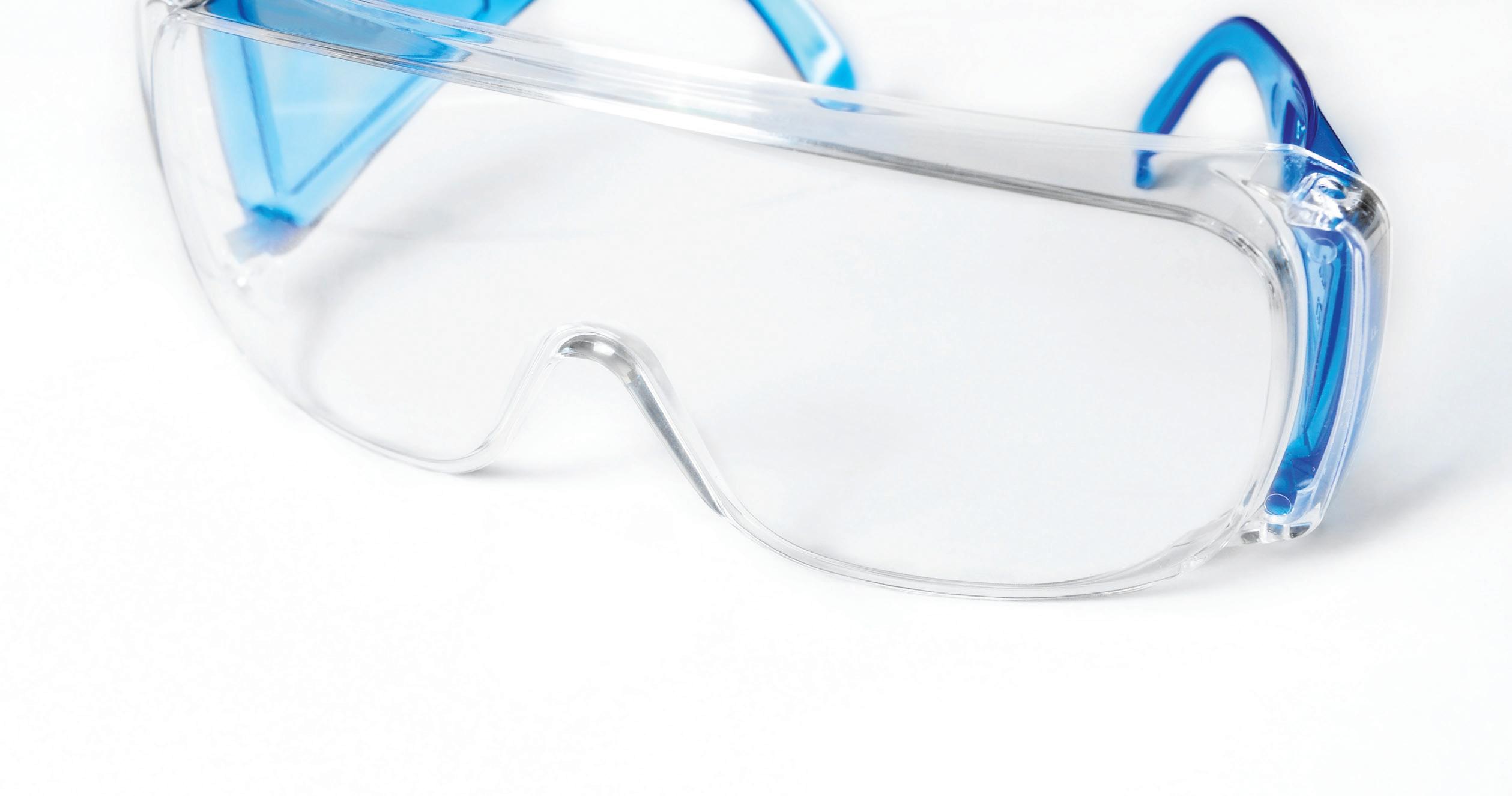
Let’s
Talk
SAFETY GLASSES!
BY LINDA SPALL
As a CERT member, you most likely already own a pair of safety glasses. You may not feel you need them if you are helping direct traffic or sandbagging, or perhaps grilling hot dogs for your fundraiser, but no matter what, they are truly a necessity in your CERT equipment bag. Your eyes are precious and delicate. Cars can emit fumes or splash chemicals that can burn your eyes. Simple windshield washer fluid is not pleasant when it directly hits your iris. A sudden gust of wind while handling sand or dirt can irritate an eye to no end. Performing a simple task can catch you unprepared and by surprise. Take this advice from someone who was helping her son-in-law rake leaves and accidentally inadvertently whipped a cedar tree branch directly into her eye and had to visit the emergency room with two punctures in her iris. Not my finest moment.
Depending on your occupation, safety glasses can ward off sparks, oils, wood chips, little shards of glass, ice, and more. Ask any welder or construction worker about heat and using necessary tools that throw particles of metal, fire, or unusual brightness into their eyes, or ask medical folks about the protection from infectious body fluids or tainted blood. Common sense tells us to do our best to protect our eyes, and modern science has given us a variety of choices.
The Occupational Safety and Health Administration (OSHA) is part of the Department of Labor and sets work standards. Those standards were taken from The American National Standards Institute (a non-profit group) which was set up before OSHA and updated through the years.
So what kind of safety glasses are there? What should you look for?
You can get safety glasses with or
without prescription.
You can get “transition” or also called ”photochromic” lenses which, like many sunglasses, have lenses that will be light when you are inside and will darken when you are in the sunlight. They can be instant sunglasses. The newer ones (made less than 2 years ago) change color more rapidly than older ones since there are new techniques in the process of making them. Another great feature is they have UV protection no matter what.
There is something else to look for when purchasing your safety glasses. Depending on your needs, you will want to see if the safety glasses are under the current standard of safety glasses. The American National Standards Institute (ANSI) has set the newest standard as Z87.1-2010. Before that, it was Z87.1-2003, which are still around. What you would pay attention to is the rule that safety glasses carry
the manufacturer’s marking with a “+” sign if the lenses are Impact Rated. Are you wearing them to only protect you from liquids and chemicals, or do you need them to protect you from flying debris? You want the “+” if you want Impact Rated.
There can be other codes on your safety glasses that you may want to research. UV lighting, the degree of strength of the impact lenses, etc. Ask your employer or your team leader for suggestions before purchasing any. An additional bonus is that you can get Anti-fog Dual Mold Safety goggles! (Fogging up your glasses can be an issue). Prices range from a couple of dollars on up. I was actually quite surprised as to how inexpensive safety glasses could be, so there is no excuse! No matter what, do your research, purchase some, and protect your eyes! Not only will you look like a pro, but you will be as smart as one! CERT
8 CERT Responder Magazine
The Little Book of Healing Trauma
BY CAROLYN YODER
Copyright 2005 by Good Books, Intercourse, PA
In today’s world of social media and accessibility to instant worldwide news, we are barraged with constant vivid imagery and disheartening information. We see violence, horrific murders, conflicts, verbal and physical abuse and devastating natural and man-made disasters. Too easily, feelings of hopelessness and despair come to light. Many readers of this magazine have experienced the trauma of witnessing or assisting in emergency events. Violence, whether a tornado, shooting, flooding, or other conflict can lead to trauma. Unchecked, this can lead to further violence, emotional imbalances and pain.
When Carolyn Yoder was the Director of Strategies for Trauma Awareness and Resilience which is in affiliated with the Easter Mennonite University’s Center for Justice and Peace Building, she wrote The Little Book of Healing Trauma. After living in several areas of the world which were innundated with war, torture, fatigue, and stress, she knows her subject. She is a licensed professional counselor: national certified counselor with an M.A. in linguistics and M.A. in counseling.
I was amazed at how a little 80 page book had so much information, simply written, easy to understand, and strangely positive. My dread of picking a book written about horrifying negativity was surprisingly invalidated. She writes about the various types of trauma, and the causes and cycles of victimhood and violence, not just as individuals, but as communities and societies. And she does so with compassion and empathy. She shows us that the more we

understand, the better we can heal and deal with our mental state as well as that of others.
From the beginning, Yoder explains simply how humans react to events. The lower part of our brain is flight or fight. We easily slip into that zone when arguing, feeling insecure, feeling threatened, and experiencing negativity such as an attack on our beliefs, race, sex, belongings, or any act of violence, manmade or act of nature. She points out how trauma can unite or divide us, and how the past affects our attitudes, personalities, ethnic groups, and even more remarkable, how the past of centuries gone by can affect us deep inside.
The last two chapters are golden, especially to CERT members. We can help the healing.
Carolyn Yoder writes “We become more secure when we promote security of our neighbors, friend and enemy alike.” Resilience, creativity, cooperative spirit, and sense of triumph is healing. By offering safety, comfort, and compassion to our community, and not giving all the power to our government and systems, but providing the power of Humanity to our neighborhoods and citizens, imagine the inner peace we can give.

This little book has actually impacted me spiritually. The last chapter titled “How Then Shall We Live” is inspirational and empowers us with realistic answers. We can heal and protect and care for our communities, fellow citizens, and ourselves.
Due to popular demand, a new, updated revision of the book will be out in 2019! Available on Amazon! peaceaftertrauma.com. CERT
CERTResponder.com 9
BOOK REVIEW
BOOK REVIEW WRITTEN BY LINDA SPALL
Carolyn Yoder
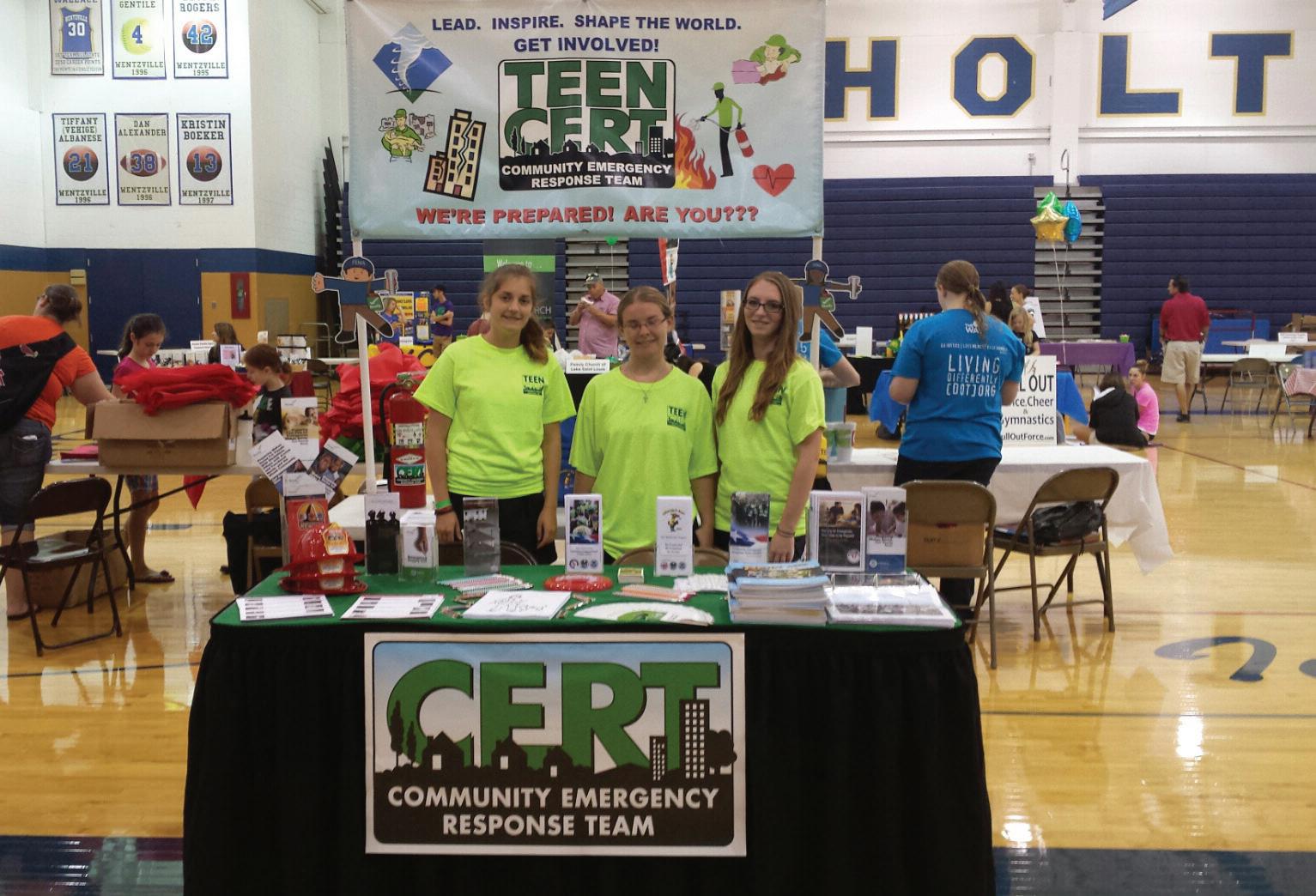
THE NEED FOR TEENS TO BE TRAINEDFOR PREPAREDNESS
BY MARK ROSENBLUM, MID AMERICA TEEN CERT DIRECTOR
As our country is witnessing more natural disasters, and more violence from terrorism and active-shooter incidents in schools, the Teen Community Emergency Response Team (TEEN CERT) program is rapidly gaining in importance, as the need for trained youth and adults to become the first responders to their own local disasters, develops in to a more dynamic effort to make emergency and disaster management as effective and safe as possible for survivors and rescuers alike.
10 CERT Responder Magazine
TEEN CERT training is an effective method to ensure that younger community members are professionally trained in order to be prepared to provide relief and assistance to disaster survivors without compromising their own safety.
TEEN CERT members are usually local high school or college students who are trained in disaster preparedness and response for events and issues their local community would face. There are universal training guidelines for the TEEN CERT program; how programs deliver that training, and how they mobilize and utilize their volunteers, is up to the discretion of TEEN CERT leaders, local authorities and professional responders.
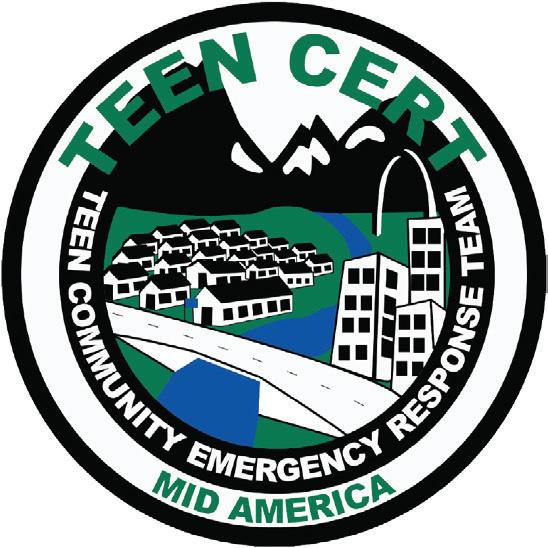
duct preparedness demonstrations, or help response organizations train their younger citizens. Through training, TEEN CERT members are prepared to serve their community not only in disaster response, but in disaster preparedness, mitigation, and recovery as well.
TEEN CERT can take on many active roles within a community. They can promote safety and preparedness at various events, such as safety days, distribute preparedness materials and con-
When utilized successfully, TEEN CERT can empower a community to prepare for, and respond, to disaster situations. The training provides a means for citizens to take responsibility for their own safety by providing them with basic disaster response skills, such as basic first aid, fire safety, light search and rescue, and team organization. TEEN CERT training also serves in educating a community about measures to reduce the impact of a disaster situation and protecting themselves and others from additional harm until professional responders arrive.CERT
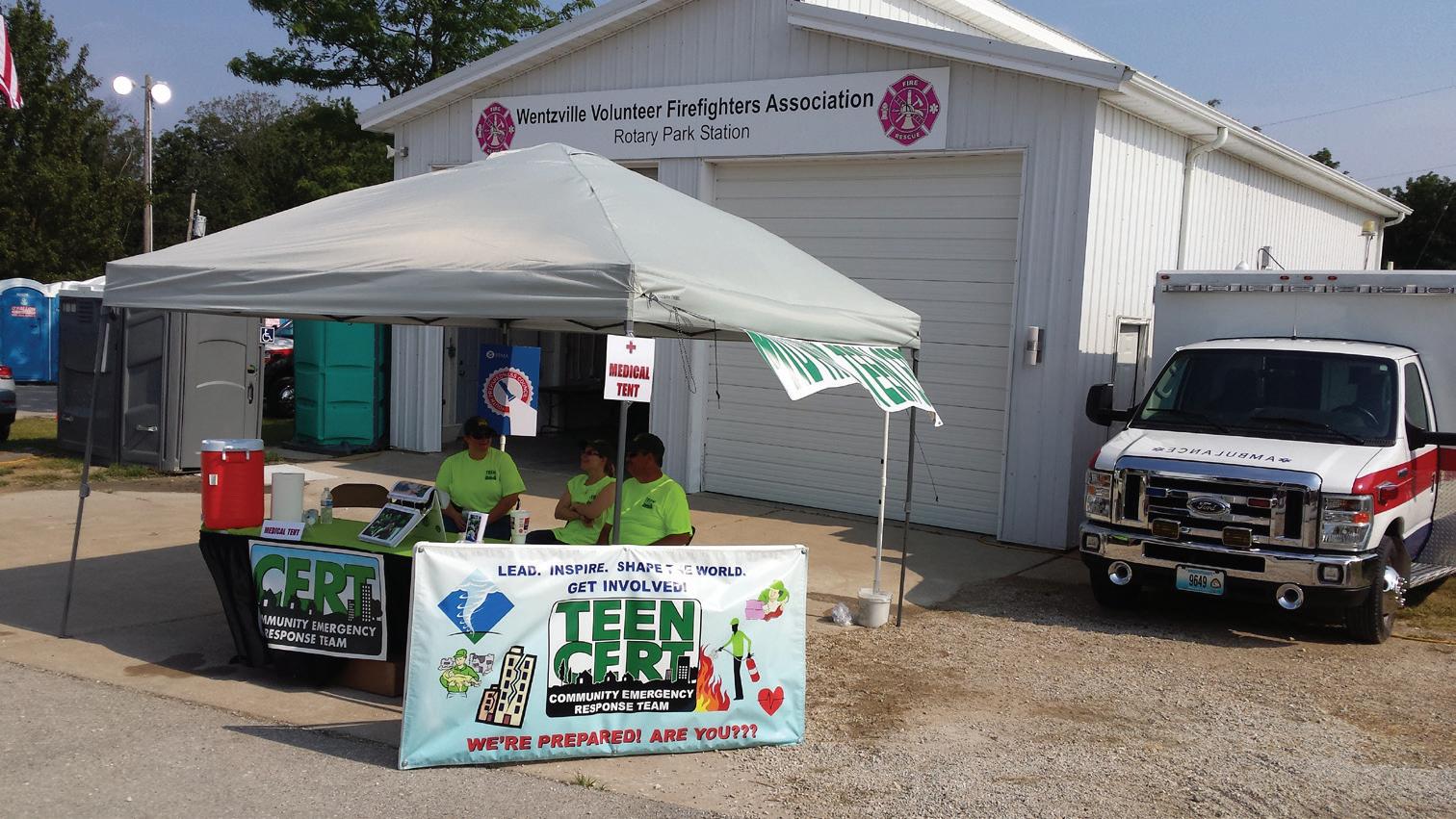

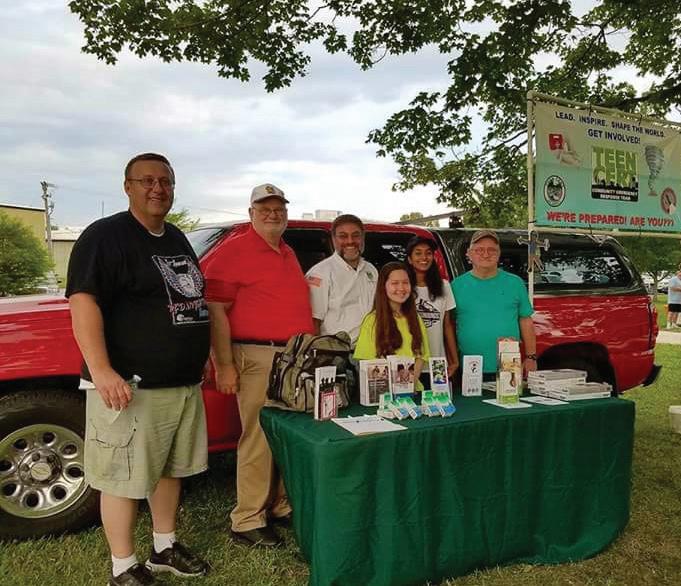
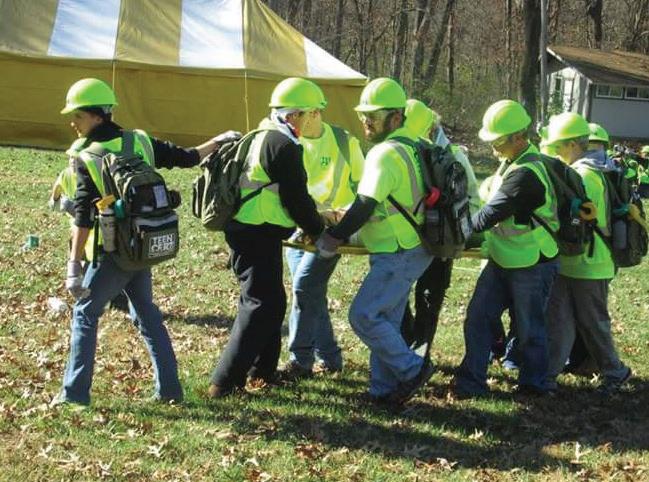
CERTResponder.com 11
For further information about classes, Mid America TEEN CERT or TEEN CERT in general, visit www.facebook.com/groups/MIDAMERICATEENCERT. You can also email Program Director Mark Rosenblum at mark.rosenblum@outlook.com
CERT SPOTLIGHT
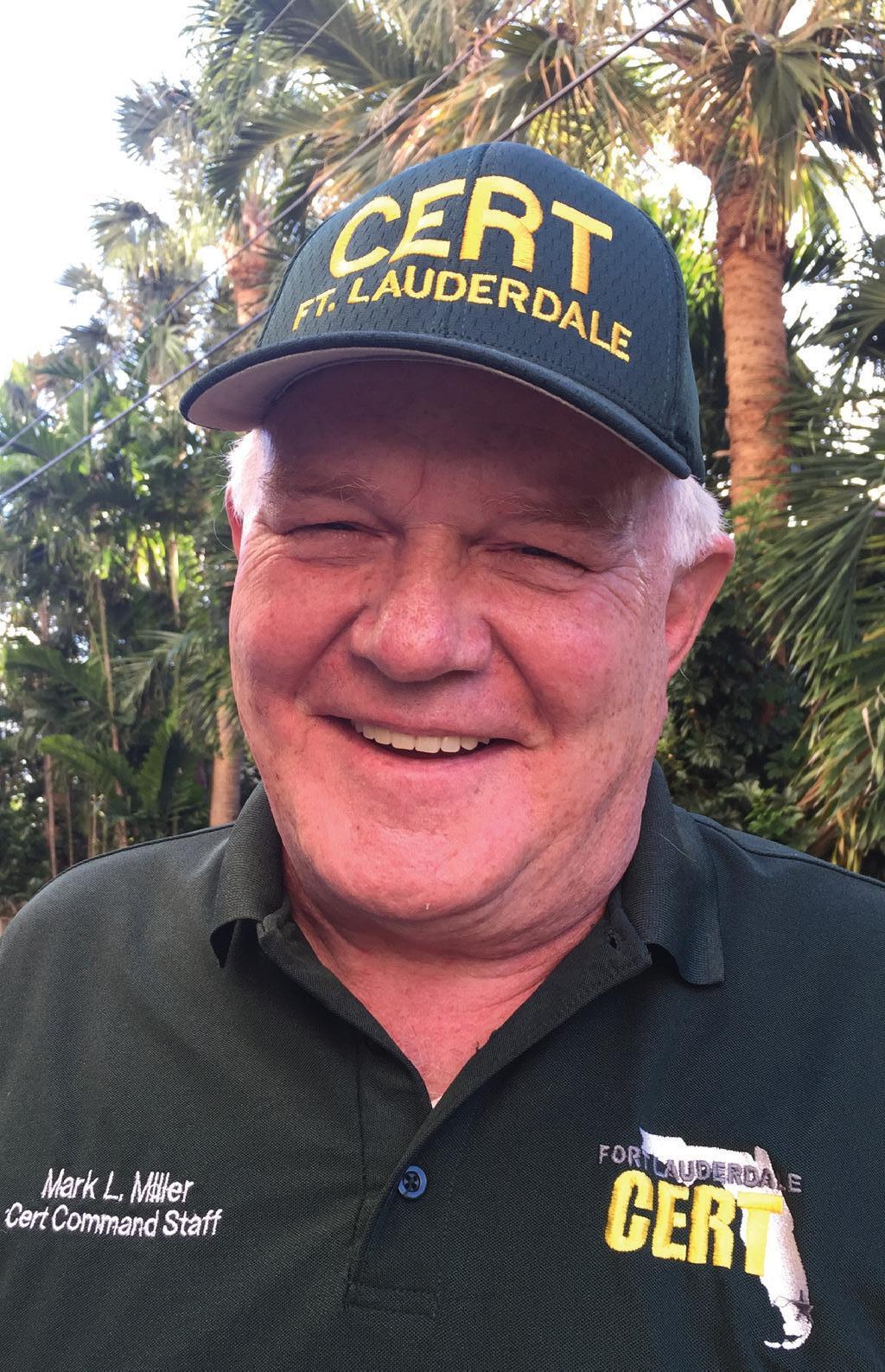
Focus On
Mark L. Miller
CERT Coordinator, Fort Lauderdale
Beginning as a “part-time” resident of Fort Lauderdale in 2010, Mark Miller joined CERT before becoming a full-time resident in 2012. However, he’s not particularly fond of the term “Retirement”!
For 20+ years, he was a member of corporate America with Fortune 50 companies in senior management and boardroom positions. His initial position was in the south Florida market in the late 1970’s. With his areas of expertise including successful turnarounds, expansion, and acquisitions. he then moved on to own two companies, each
based out of his home state of New Jersey. The first was in the retail food service industry, and the second and most recent, was a chain of post-secondary private schools in three states in the northeast.
The son of educators, he discovered that the apple doesn’t fall far from the tree, as he looked for areas to refocus his efforts in Fort Lauderdale. By chance, an ad in a local paper said CERT was looking for new members. After investigating further, he decided to join, despite having no experience. Six years later, he is extremely glad he did, strongly feeling that the reward from helping people in a myriad of circumstances far outweighs the amount of time required.
In addition to being Assistant Operations Chief with CERT, he is also the president of a non-profit dedicated to improving early childhood literacy, a member of the Fort Lauderdale Volunteer Office Executive Council, and President of his condominium association. In August of 2018, Mark’s team won the 2018 National CERT Team of the Year in Naples.
WHAT IS THE BEST PART ABOUT BEING A CERT COORDINATOR?
Having the opportunity to train our members and community organizations, and seeing the reaction from the Fort Lauderdale community to our new CERT vehicle (SU-53), whether it’s engaging teens after a hands only cpr class, or seniors steaming out of their condo’s after teaching a hurricane preparedness class.
WHAT DO YOU CONSIDER YOUR GREATEST ACCOMPLISHMENT?
My greatest accomplishment has been to establish a network of condominium, home owner association, and other community leaders, which has led to our education and training of thousands of citizens in disaster preparation and basic lifesaving skills.
WHAT DO YOU DO FOR FUN?
Golf occasionally and try to keep up with Grandchildren
HOW CAN THE PUBLIC SAY “THANK YOU” AND MAKE YOUR WORK EASIER?
By joining our group and thereby better preparing their neighborhoods in case of disaster. Additionally, they can continue to engage us for hurricane preparedness, Hands Only CPR, Stop The Bleed, and other educational training.
WHO HAS BEEN YOUR GREATEST INFLUENCE?
My family. Their support, enthusiasm and grounding are invaluable. CERT
12 CERT Responder Magazine



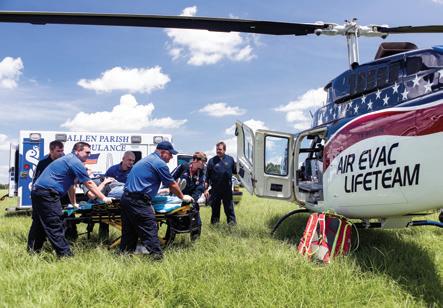
CERTResponder.com 13 ACCESS. QUALITY. SAFETY. WHEN YOU NEED IT MOST. Payment Method: ❏ Check ❏ Charge: Credit Card Number:__________________________________________Expiration Date:_____________Security Code:_______ How did you hear about us? __________________________________________________________________________________ SUBSCRIBE ONLINE to CERT Responder: www.certresponder.com/subscribe MAIL PAYMENT OF $35 TO: CERT Responder Magazine | 629 Salt Lick Rd. | Saint Peters, MO 63376 CERT RESPONDER MAGAZINE BUY 2 CERT RESPONDER MAGAZINE SUBSCRIPTIONS FOR ONLY $35! You can get 2 print subscriptions, 2 digital subscriptions, or 1 of each...your choice! Just fill out the form below with the information of the 2 recipients. Special
Name:____________________________________________ Company__________________________________________ Address: ___________________________________________ E-mail address: _________________Telephone: _________ Name:____________________________________________ Company__________________________________________ Address: ___________________________________________ E-mail address: _________________Telephone: _________ Offer Expires December 31, 2018
Holiday Offer!
Award-Winning CERT Team:
FORT LAUDERDALE
BY MARK MILLER, ERICA LOWTHER, AND FRANK MILLER

The Fort Lauderdale CERT Team was formed in 1996, and has since continued to serve the community ever since. Our members are all volunteers, and come from many diverse backgrounds. We offer specially-trained resources to respond to emergency incidents and to provide various services and training for the residents of the community.
The City of Fort Lauderdale is the largest of Broward County’s 31 municipalities, and the City spans 36 square miles, bordering in the east on the Atlantic Ocean. Population of the city is 175,000.
The Fort Lauderdale CERT program is administered within the Emergency Management office of the City of Fort Lauderdale. The city is divided into 11 fire zones and has a fire rescue station in each zone. The Fort Lauderdale CERT program has 240 volunteer members who are assigned to the station nearest their residence. Assigning members on this basis allows for faster response times, and also enhances community local relations.
Our CERT team was awarded the 2018 National CERT Team of the Year at the recent National CERT Team Conference held in Naples, Florida. This is the second award for the team in as many years,
having also been the recipient of Florida CERT Team of the Year award in 2017.
Living up to our motto “One Mission, One Family, One Neighborhood”, the Team is an ever-present force in a wide variety of events in the City. From September, 2016 thru June, 2018 the team participated in 128 events which represented 8500 volunteer hours. The number of volunteer hours illustrates our commitment to the City and surrounding municipalities.
This includes over 500 hours of public education through presentations and seminars on subjects such as hurricane preparation, AHA training in hands only CPR, and DHS stop the bleed training. This information is disseminated to groups such as homeowner associations, schools, church groups, neighborhood meetings, and public workshops.
Training and Engagement consti-
tuted approximately 6000 hours. This involved CERT volunteers providing medical assistance at numerous events and training other jurisdictions who don’t have the opportunity to experience such large scale deployments.
The primary responsibility of CERT at most events is to provide medical assistance by staffing medical tents and providing remote medical patrols. In the case of high visibility events, we coordinate our efforts with FBI, Homeland Security, Broward County sheriff, and the police department of the municipality. Examples of these events include Tortuga Music Festival (50k attendance), Fort Lauderdale Air Show (100k), Winterfest Boat Parade (100k), Stonewall Pride (30k), and Wicked Manors(15k). Additional events include health fairs, post hurricane POD’s, and community non-profit gatherings.
14 CERT Responder Magazine
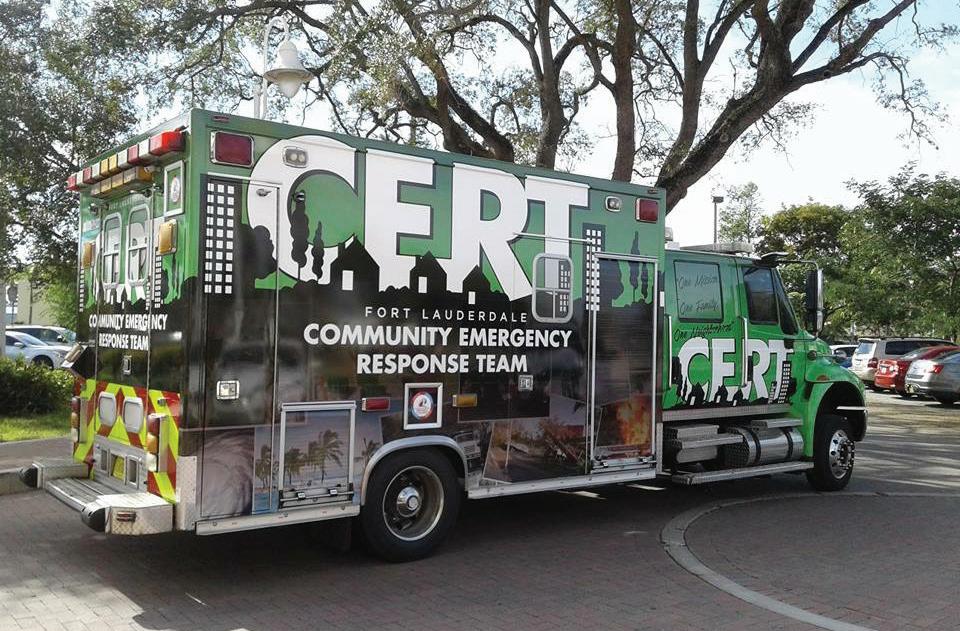
As the largest of the 14 CERT programs in Broward County, we also provided over 800 hours to offer training and assistance to other CERT programs in Broward County as needed. This ranged from including those groups in our CERT basic course training to providing support for events in their community. Sharing resources has not only assisted other programs, but strengthened inter-jurisdictional cooperation.
The Fort Lauderdale CERT team is constantly looking for new ideas and ways to better serve our community. The most recent example of this was activation of the Fort Lauderdale CERT bike team. The team is deployed during special events and large Government/ NGO gatherings. The use of the bikes allows members to respond to a larger area and reduce response times. This is particularly true in the case of larger events such as Tortuga Music Festival, Stonewall Pride Parade, Fort Lauderdale Air and Sea Show, and the Eye of the Storm Hurricane Preparedness Fair. The bikes are assigned to seasoned CERT members who have received advanced medical/trauma training. Each bike is equipped with a GPS and complete com-
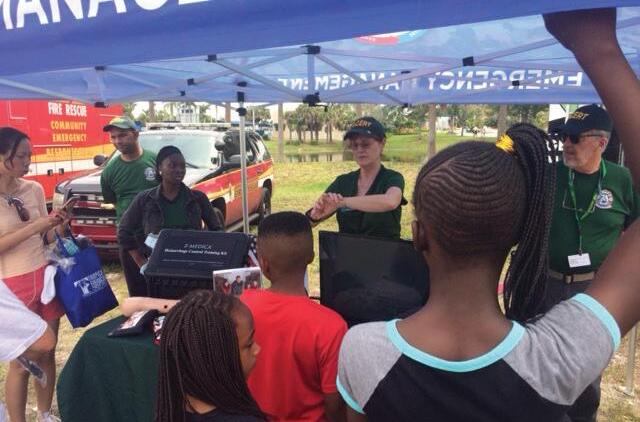
pliment of trauma supplies including a portable AED.
Another example of our community service was the deployment of the Fort Lauderdale CERT Emergency Response Vehicle (ERV) 53. This repurposed first responder vehicle is used for many applications. The most important purpose is to provide rapid response to an actual emergency event. When CERT members arrive at the scene, the vehicle has all the supplies and equipment necessary to complete the mission. The ERV is also used to train CERT members and enables us to mobilize to all 11 fire stations. In addition, he ERV serves as a large, positive mobile billboard for our CERT program, and is in attendance at all of our events.
In our continuing effort to improve vehicle utilization, EV-53 has most recently been modified to function as a self-contained, mobile command center. These upgrades include complete radio communication capabilities, and a telescoping camera to enable the operator to observe a larger area and provide real-time updates of conditions at an event/disaster.
A key component for our CERT
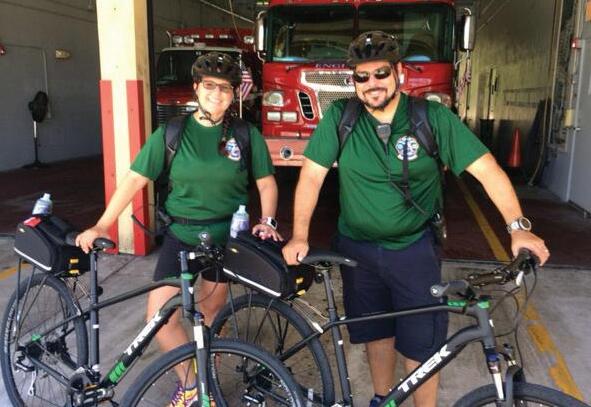
program is to continue to grow in both size and diversity. This has proven to be beneficial not only in recruiting new members, but also in expanding our community involvement and engagement. To achieve these goals, we utilize a number of approaches. These include:
• EV-53 deployment at every event giving instant recognition and generating a great deal of interest
• The CERT Bike Team presence serving to attract recreational cyclists that have shown an interest in our program
• Our City of Fort Lauderdale CERT Facebook page allowing us to broadcast our activities to a much broader audience
• Utilization of the Nextdoor app to further expand our social media footprint
• Newspaper articles and ads running on a regular basis promoting our CERT program
• Use of local market community TV (public access) running banners for our events and upcoming classes
• Distribution of thousands of informational CERT flyers, informational packets, and schedules for upcoming Basic Training courses and CERT business cards at each of our activities/ events. CERT
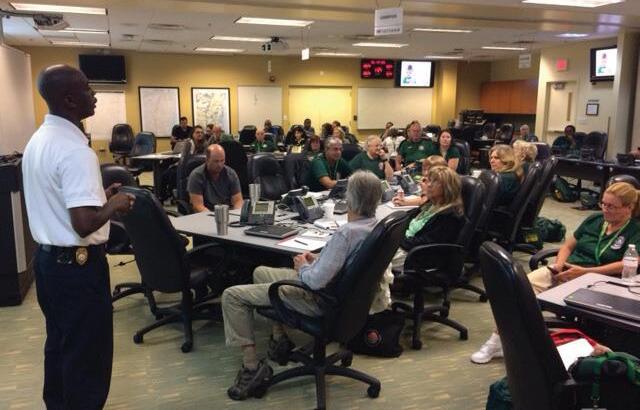
CERTResponder.com 15
sUAS Search and Rescue Incident Coordination
Part 2
BY JAY MANLEY

Last time, we covered the fact that, to fly legally, you will need to either fly and follow Part 107 sUAS flight rules and/or fly under a Certificate of Authorization (COA). Then we discussed the first steps in learning – the incident command structure – and hinted that there was a reason that we’re suggesting this training. Now let’s dive into the rationale of why understanding the IC structure will help you be a valued asset during a search and rescue.
When you are asked to participate in a search, very likely you will have been called in by an agency. Police, fire, rescue, or similar. As mentioned before, if you can, have a Memorandum of Understanding (MOU) already in place to fly under their COA. That will give you the most flexibility to fly the mission parameters asked of you. So, what is a MOU? It describes a bilateral or multilateral agreement between two or more parties. It expresses a convergence of will between the parties, indicating an intended common line of action. It is often used in cases where parties either do not imply a legal commitment or in situations where the parties cannot create a legally enforceable agreement.
Wow, did I lose you? I’m hoping not. This creates a commitment of what both sides will try to accomplish during a mission. It also lets you fly, potentially, under their COA,
which is what you want. If that isn’t accomplished, you will have to fly under your personal COA (if you have one) or use only Part 107 rules.
But more important to them is that you understand their terminology and paperwork. This is where that FEMA NIMS training becomes important. Since most agencies have adopted much of the FEMA IC (Incident Command) structure, having that knowledge already will help you understand who to talk to and how to be a deployed asset on the mission.
When you first report for a mission, even if it’s only by phone, you’ll likely speak to someone with a specific role in the mission; i.e. Incident Commander, Flight Briefer, or maybe an Air Branch Director. They’ll get you “signed in” to the mission and give you details on what they need you to accomplish. One question you should have whenever you are
16 CERT Responder Magazine
called is Name, Number, Incident Role – this will help you when you have questions later about what to do and/or how to inform people of any findings. A Flight Briefer is likely someone that will give you mission parameters and let you know who to talk to afterwards.
An Air Branch Director is more focused on all overall aerial assets – including full-sized aircraft – and may need to work with you on incorporating you into areas where there are manned missions as well. And most important is the Incident Commander – that person oversees everything with the mission.
One thing to pause and mention here now is that regardless of the person or agency that contacts you, if there is anything that would cause any undo safety issue or risk issue that cannot be mitigated, you MUST inform them. For instance, maybe you went out to dinner and had one too many. You cannot now drive to
Since most agencies have adopted much of the FEMA IC (Incident Command) structure, having that knowledge already will help you understand who to talk to and how to be a deployed asset on the mission.
a mission, so please decline it. Or maybe they’re asking you to fly in conditions that your UAS cannot operate safely in – high winds, rain, snow, etc. – then politely let them know why you cannot do it. Also, you and your equipment might be ok, but maybe they want you to fly into a high-risk area – think oil refinery with all those stacks, towers, and tanks – maybe a heavily forested area – or possibly a power substation with all the high-tension lines coming in from all directions. All of these, once you have found out about them, might preclude a safe sortie. Be honest and let them know the issue!
Once you’re good to go and know that you can fly the mission safely and hopefully successfully, the next question you need to ask them is what they need for documentation. This isn’t only such things as fuel receipts and such, but required paperwork for the mission, such as:
• Mission Sign-in and Emergency
Contact Information
• Flight Briefing Form
• Vehicle/Mission Reimbursement Requests
• Flight Debriefing Form
• Search and Rescue Mission Report
• Etc.
The paperwork, while not as glamourous as flying, is every bit as important as the mission itself, if for no other reason than to document what was done and how it was done – but also if you are expecting any form of reimbursement from the event. Try to get a copy of the Forms and Requests ahead of time so that you know and track the information that is needed for the overall mission and each sortie. And don’t forget the ever-important sortie debrief. If the mission is not yet complete during your flight(s), this will help lead the IC to make critical decisions on what to do next or what assets to deploy in further sorties.
Understanding the IC structure and the related paperwork will make you a go-to person for your local agencies. They want to work with assets that understand how they operate, because then you will be a part of their team. That’s the reason that in the next article, I’ll discuss how to prepare to fly the mission, and crew resource management –the assets you have at your disposal and how best to utilize them. CERT
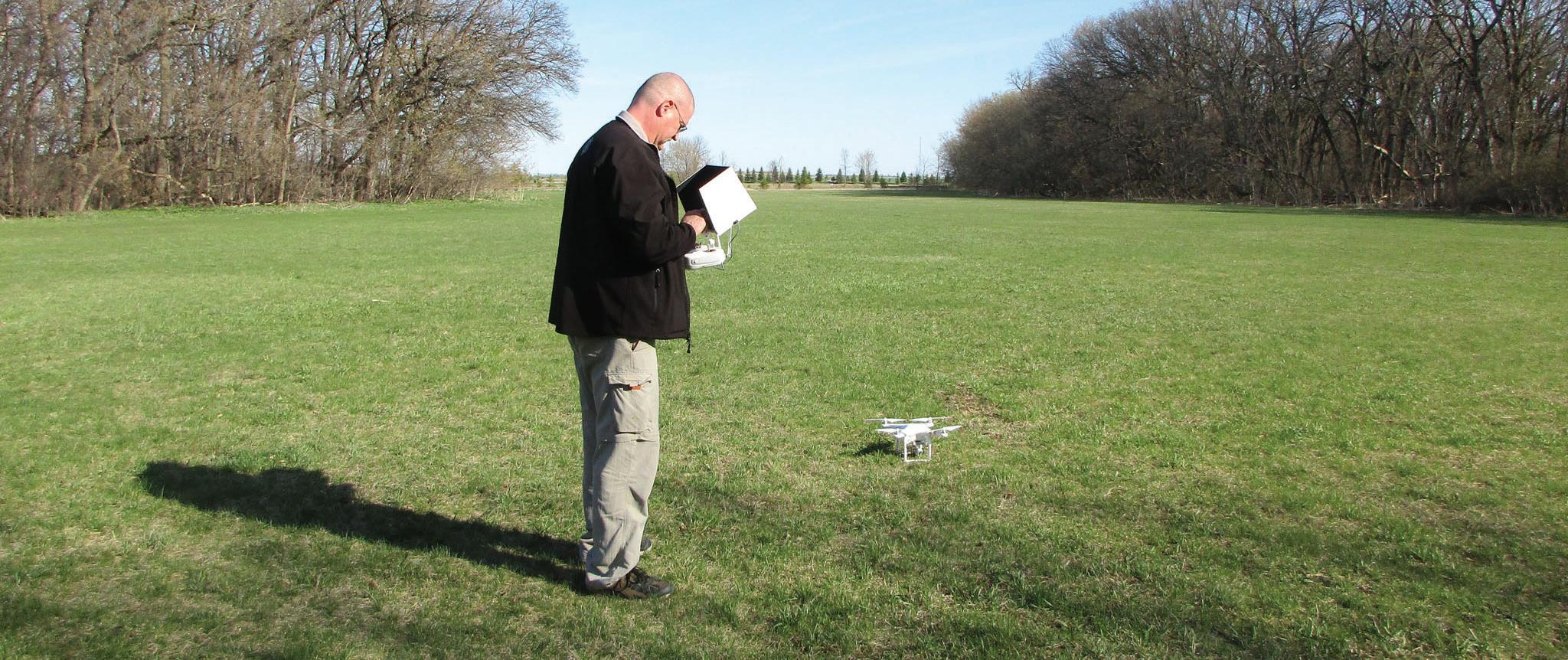
CERTResponder.com 17
AshBritt’s Safety Corner Introduction
BY BRITTANY PERKINS
Hello CERT members, volunteers, and community leaders. My name is Brittany Perkins Castillo. I am the CEO of AshBritt Inc., the nation’s leading disaster response and recovery firm. AshBritt has performed more than 330 disaster response missions and 30 special environmental projects across 19 states, including 60 federally declared disaster events. We successfully serve clients across the United States with disaster response and recovery training, planning, and response operations. AshBritt has been a contractor for the U.S. Army Corps of Engineers (USACE) for 20 years and is currently the prime contractor for the USACE debris removal contracts for the South Pacific Division (AZ, CA, NV, UT, NM) and South Atlantic Division (AL, FL, GA, SC, NC).
AshBritt specializes in debris management and environmental services and we provide post-disaster shelter, food, ice, water, and other services as requested. As a family owned and operated organization, we prioritize safety, local hiring, community involvement, and strong corporate citizenship.

At this year’s National CERT Conference in Naples, Florida, the AshBritt team presented Lessons Learned from the Unprecedented Disaster Response Season in 2017: Hurricanes Irma, Harvey and the Northern California Wildfire Debris Removal Missions. We received a positive response from the audience along with requests for additional information and trainings.
AshBritt is proud to provide more information and to build on our partnership with CERT through our new initiative in the CERT Responder Magazine, The AshBritt Safety Corner. This quarterly column will focus on disaster response safety, written
Introduction to Creating a Safe Work Site
by AshBritt’s Environmental Health and Safety Officer, Brett Postelli. Brett has been recognized as a leader in the industry and safety community by the federal government, state agencies, and his peers. We hope you enjoy the column!
On behalf of the entire AshBritt team, we thank CERT teams across the U.S. for their work and commitment to aid communities in responding to and recovering from emergency events. Your year-round planning and training is an asset to your neighbors and all members of the response community.
Learn more about post disaster debris management by watching an animated short, Post-Disaster Debris Management 101 at www.AshBritt.com/dm101. CERT
Here is a brief checklist of some of the things you should do to ensure a safe work site wherever you are responding to an emergency. Keep in mind when responding to any situation, but especially an emergency, things are prone to change rapidly.
1. All sites should have fire extinguishers and a first aid kit.
2. Exercise situational awareness and the buddy system.
3. All equipment/vehicle operators must pay attention to their surroundings.
4. Make eye contact with operators or drivers before approaching equipment or trucks.
5. All sites should exercise good housekeeping.
6. A spotter should be used at all times when trucks are backing up.
7. Watch for hazardous trees.
8. Site conditions will determine the level of PPE to be worn.
9. Use traffic control devices when needed.
10. Use caution when handling white goods with refrigerant.
11. All work should be performed during daylight hours unless light plants are used.
12. Watch for struck bys and caught betweens.
13. Watch for slips, trips, and fall hazards.
14. Cover and mark any potential fall hazards.
18 CERT Responder Magazine
ASHBRITT’S SAFETY CORNER
Brett Postelli, AshBritt Corporate Environmental Health & Safety Manager, providing a safety briefing to middle school students during an AshBritt STEM operations visit for Northern California students learning about the wildfire response.
CASTILLO AND BRETT POSTELLI
why KNOT?
THE CLOVE HITCH
PART 6 IN OUR ONGOING SERIES

Along with the bowline and the sheet bend, the CLOVE HITCH is often considered one of the most important knots. It is an easy knot to tie, and it secures a line to a tree or post quickly, but it does slip when used alone, without any other knots as a backup.
5. The knot is complete. INSTRUCTIONS
1. Hang rope from the support.
2. Loop around the support with the end.
3. Pass it from behind the rope.
4. Pull to tighten.
• It is most effectively used as a crossing knot.
• It can be used as a binding knot, but is not particularly secure in that role.
• This knot is particularly useful where the length of the running end needs to be adjustable, since feeding in rope from either direction will loosen the knot to be tightened at a new position.
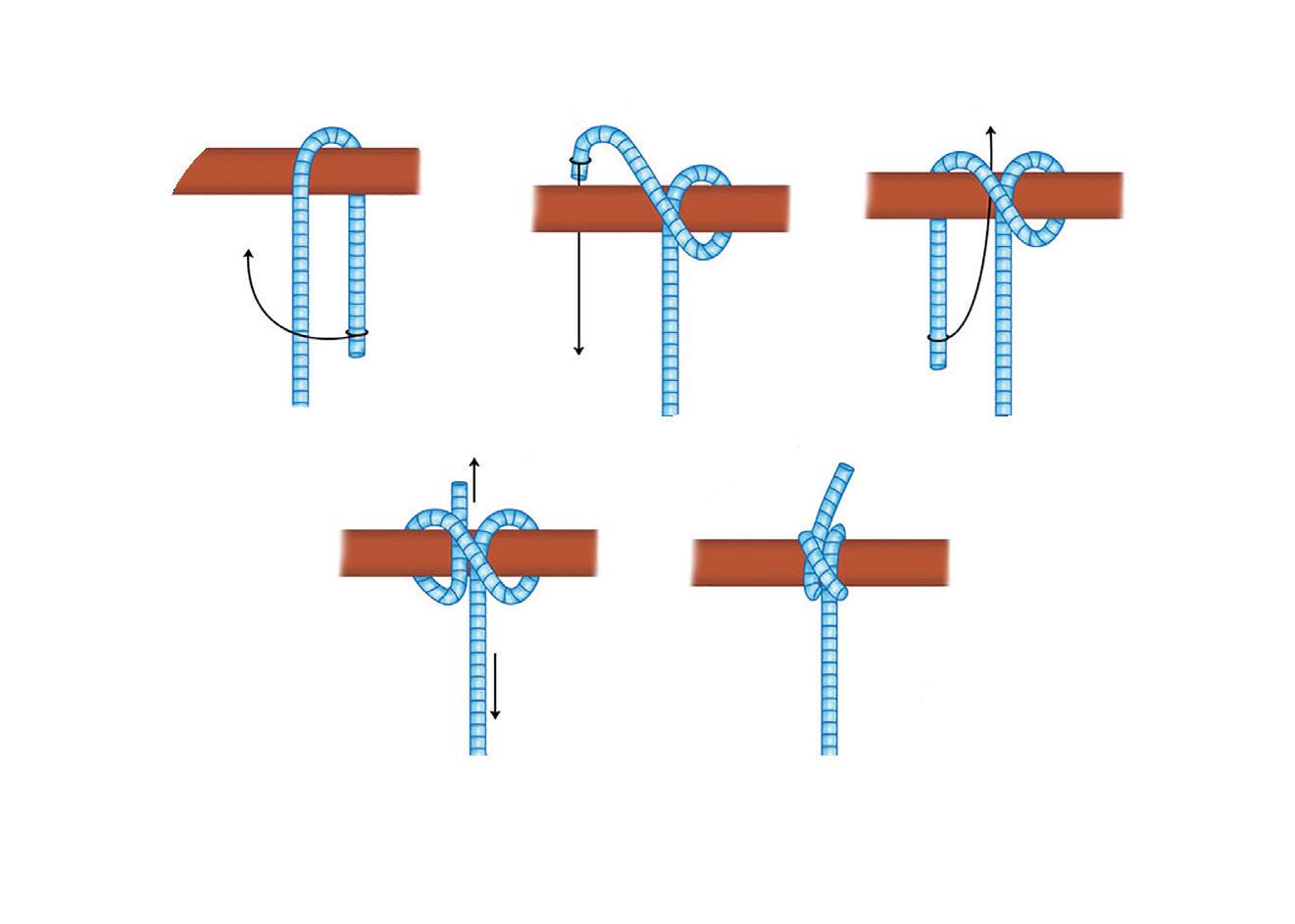
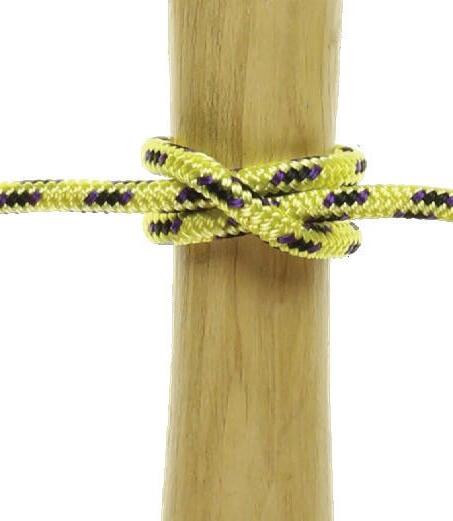
CERTResponder.com 19
USES 1 4 5
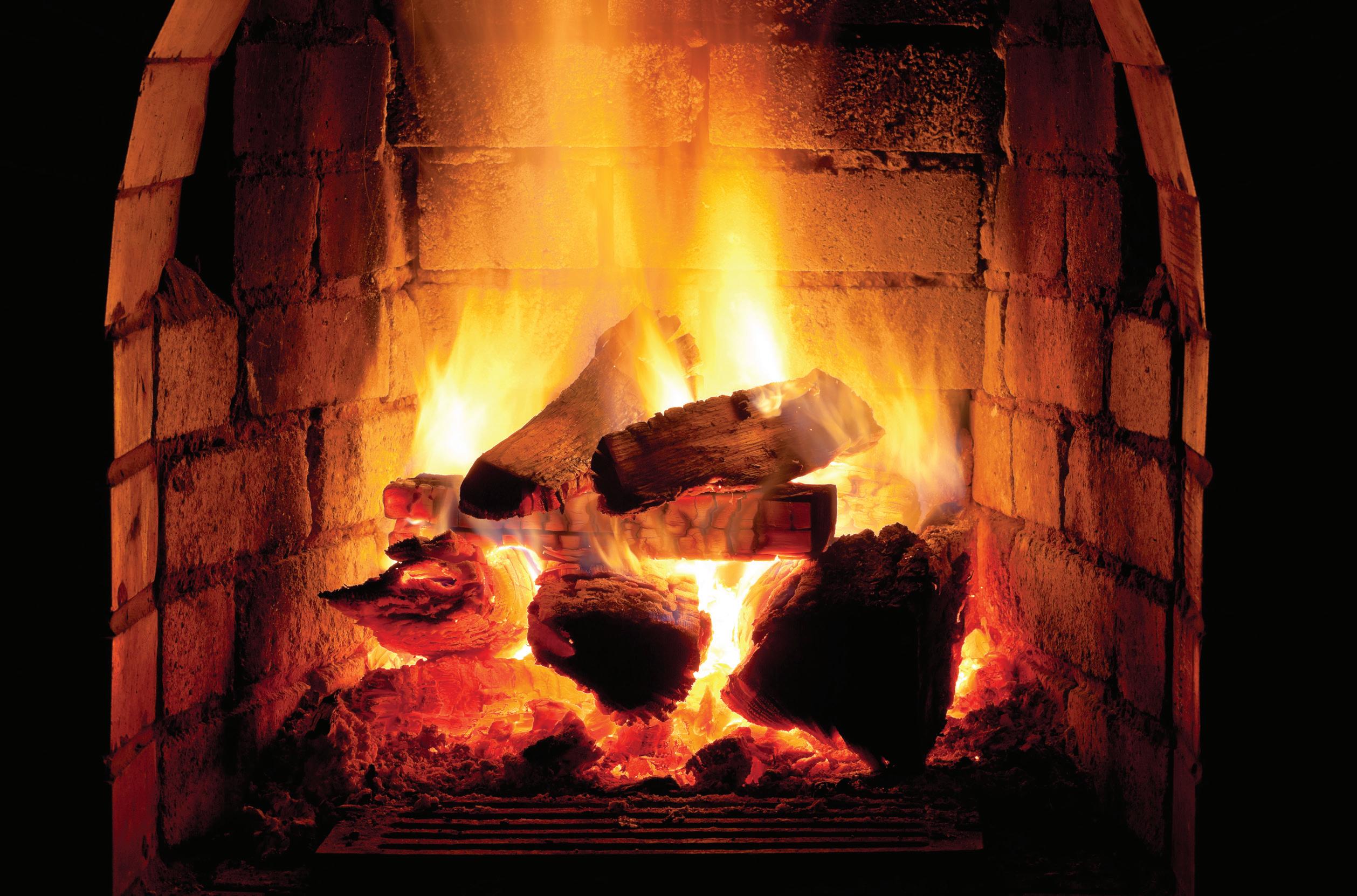
WINTER HEATING SAFETY
BY EDWARD M. BEIRNE MS, EFO CFO NEMAA
The fall season is always a great time to appreciate nature’s beauty and partake of the crispness in the air. It is also time to begin thinking and preparing for what lies ahead…winter.
The fall season is always a great time to appreciate nature’s beauty and partake od the crispness in the air. It is also time to begin thinking and preparing for what lies ahead…winter.
Winter weather and its effects vary across the country, but it’s safe to say that at some point, you will be presented with either a very cold temperature and/
or some form of winter precipitation. Depending on your locale, this may be anything from freezing rain to heavy, blowing snow. In some instances, it could be all of these. How we prepare will determine our level of success.
Let’s start with an inventory of what we have on hand in your home, and concentrate on what’s important dur-
ing the cold weather: heat. If you’re like most, you’ve already had your heating system checked for proper operation. This is essential, regardless of the type of system. In most instances, a gas fired appliance (and this includes your water heater and oven/stove) is dependable as long as it is serviced annually. The chief concern here is carbon monoxide
20 CERT Responder Magazine
(CO). CO is colorless and odorless, and according to the CDC (2015) is responsible for almost 400 deaths annually. These occur during the winter months of December, January, and February. Even mild cases of CO exposure present with headaches, and often mimic flu symptoms.
CO is just not limited to gas fired appliances. Anything that uses a flame, or has a flame present, has the potential to emit CO. Just as our appliances need to be checked annually, when was the last time you had your fireplace and flue checked and cleaned? All too often, I have seen homes damaged from fire because the flue was blocked with a heavy buildup of creosote, the combination of smoke, water vapor, gases, unburned wood particles, hydro-
Anything that uses a flame, or has a flame present, has the potential to emit CO.
carbon, tar fog, and assorted minerals produced from burning your wood logs. In some cases, the creosote ignites within the flue and starts a fire within. These are very easy to identify, as your chimney can be seen shooting embers and flaming pieces of creosote like a roman candle. Flue maintenance is important because this is the protective channel that removes the smoke and CO from your house. A good flue maintenance program will identify any breaches in the flue that could leak CO out into your home.
Continuing with our fireplace, do you know where the damper controls are
and how to operate them? Many calls for service I see this time of year involve the damper either being completely closed, or barely open during the initial startup phase. The smoke will take the path of least resistance, and that usually means throughout the house. The best time to locate the damper control is well before you decide to start a fire in the firebox.
As we begin to experience the changing temperatures of the season, let’s all remember to practice good preparation and prevention for the systems we rely upon to keep us comfortable. Stay safe! CERT

CERTResponder.com 21
Name:_____________________________________________________________________________________________________ Company:_________________________________________________________________________________________________ Address: ___________________________________________________________________________________________________ E-mail address: _______________________________________________Telephone: __________________________________ Payment Method: ❏ Check ❏ Charge: Credit Card Number:__________________________________________Expiration Date:_____________Security Code:_______ How did you hear about us? __________________________________________________________________________________ Subscribe Now! SUBSCRIBE ONLINE to CERT Responder: www.certresponder.com/subscribe MAIL PAYMENT OF $24.99 TO: CERT Responder Magazine | 629 Salt Lick Rd. | Saint Peters, MO 63376 CERT RESPONDER MAGAZINE

The Santa Ana Winds: Background on California’s Constant Fire Threat
Article
Source: Robert Fovell, Professor of Atmospheric and Oceanic Sciences, University of California, Los Angeles
Santa Ana winds are dry and warm (often hot) winds in the Southern California area that blow in from the desert -- which includes the Great Basin of the western United States, incorporating Nevada and part of Utah.
During the winter “half-year”, the Great Basin tends to be cooler than the LA Basin. Periodically, high pressure builds over the Great Basin. In the Northern Hemisphere, air flows clockwise around high pressure systems. For highs located in the Great Basin, that clockwise flow pushes air into the LA Basin from the northeast and the east. Thus, the Santa Ana winds start in the Great Basin as a cool or even cold wind
The Great Basin resides at a higher elevation than the LA Basin, which is near sea level. The air flowing into Southern California, forming the Santa Anas winds, is subsiding. When air descends, it is compressed, and its temperature rises. Dry (unsaturated) air warms on descent at a rate of 10C/km or almost 30F per mile -- an incredible rate. That means if you take a piece of air located only a mile above your head, and bring it down to your feet, it would wind up 30 degrees Fahrenheit warmer than when it started. You don’t need to change the altitude of air very much to alter its temperature significantly. In many places, the Santa Ana winds tend to behave like a mountain gap wind, increasing speed as the flow is channeled through passes and canyons. If you take a garden hose through which water is flowing, and restrict the opening, you increase the water velocity, and observe a similar effect. In other places, notably in San Diego county, the winds accelerate as they flow over the ridge, down into Southern California. These are called
“downslope windstorms”. Both the gap and downslope winds are capable of producing very fast speeds
After formation, the high pressure systems associated with Santa Ana wind conditions tend to move eastward with time. As the highs move away from Southern California, their influence on the area diminishes. Thus, Santa Ana episodes tend to last only a few days, although very prolonged events occur occasionally
Southern California has a Mediterranean climate, which means precipitation falls during the winter and the hot summer season is also dry. By the time the Great Basin starts cooling in September and October, Southern California has already experienced an extended period of hot, dry weather. In October, the Great Basin is cooler than the LA area but not yet very cold -- so the Santa Ana winds can start at a higher temperature and thus reach sea level very hot and extremely dry after compression warming. That heat, in combination with prolonged summer drought, produces an especially high fire hazard. As the winter takes hold in Nevada, however, decreasing temperatures there mean the winds won’t be as hot and dry once they descend to sea level. In most years, the rains have already started in Los Angeles by that time, replenishing plant moisture. The fire threat never completely vanishes - especially during dry winters -- but it usually decreases as the winter wears on. CERT
22 CERT Responder Magazine
CONNECT YOUR TEAMS
Send messages to all your responders, via call or text, instantly. Visit try.call-em-all.com/CERT to setup your free account.
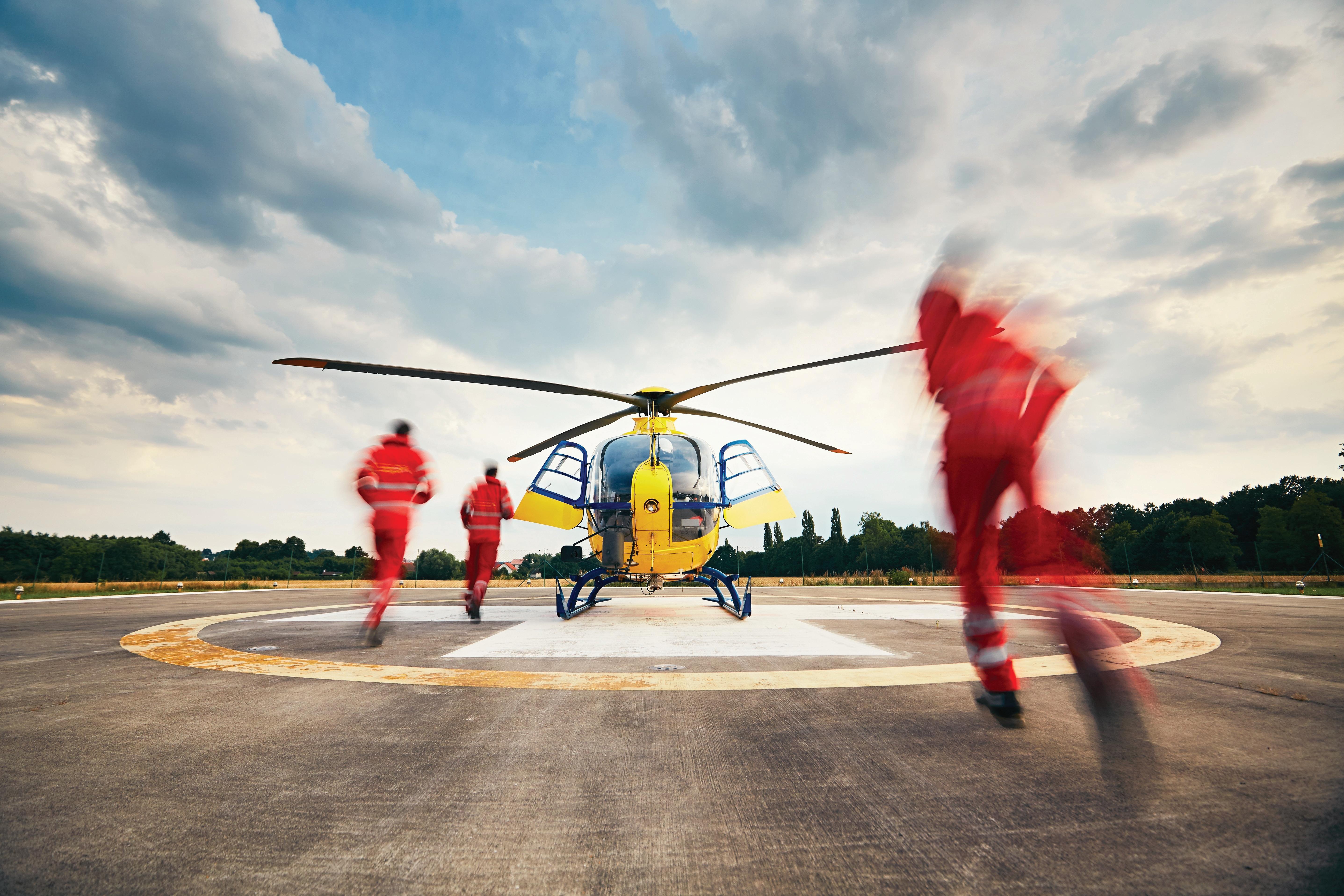
COMMUNICATE IMPORTANT MESSAGES
Update team on urgent issues
Determine availability of team
Emergency notifications
Call us at 877-226-3080 to learn more or get started for free below. try.call-em-all.com/CERT
Coordinate during disasters
Training reminders
Recorded voice or text messages
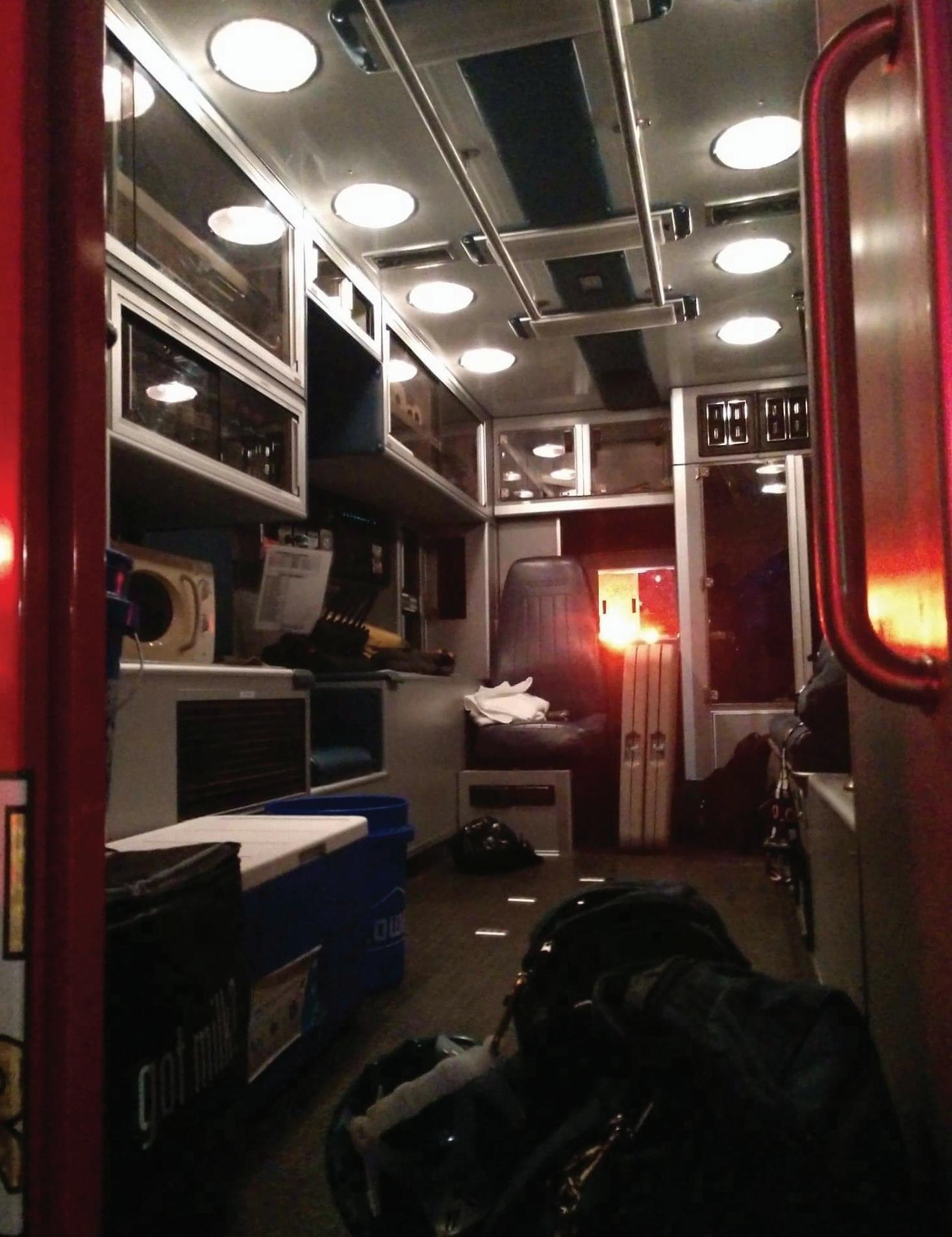
USING CERT TEAMS FOR REHAB OPERATIONS
BY JOSHUA W. MADDOX
CERT REHAB
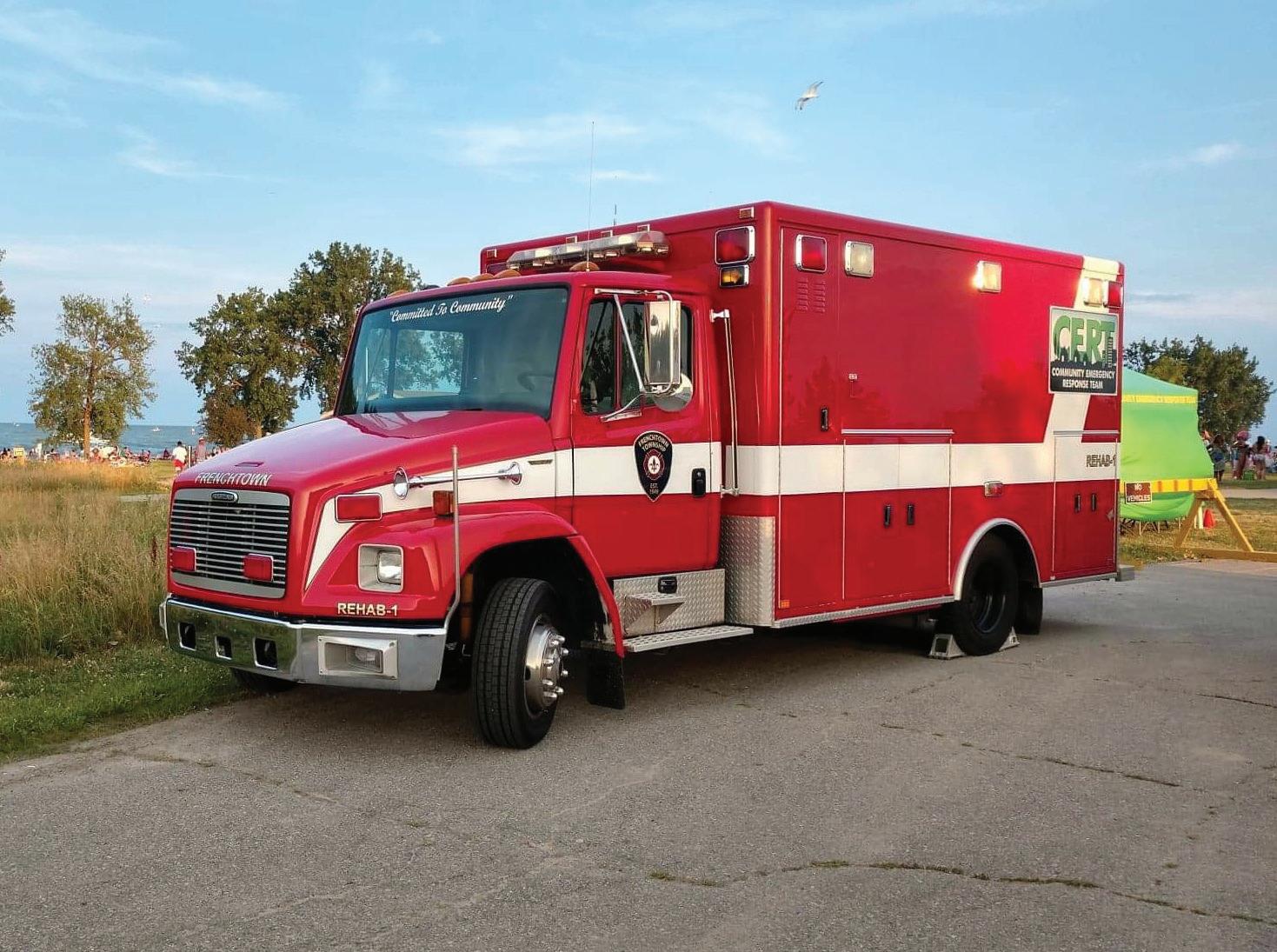
BACKGROUND
Frenchtown Township is located in northern Monroe County of Southeastern Michigan, situated along 14 miles of Lake Erie coastline, and is known for its picturesque sunrises and deep French roots from settlers long ago. Frenchtown is home to approximately 25,000 residents and extends its borders over 44 square miles. Although residential and commercial districts make up the majority of the township, industry and agriculture comprise the remaining portion of the response area. Frenchtown CERT is sponsored by the Fire Department and was born out of a grassroots campaign effort to garner citizen involvement to provide on-scene support work and was officially formed in 2011. Since its inception, like most teams, Frenchtown CERT has faced many challenges and
has incurred some bumps and bruises along the way. However, those challenges have brungt many valuable lessons, which help cultivate a culture of commitment and dedication.
The concept of using CERT to provide Rehab and Medical Monitoring services began in 2012 when some team members of Frenchtown CERT attended a Rehab & Medical Monitoring seminar sponsored by the International Fire Chiefs Association. This seminar provided an overview of implementing a rehab program at the local level, along with delivering compelling truths pertaining to the necessity of offering rehab services to emergency responders.
FIRST STEPS
After attending the Rehab & Medical Monitoring Seminar, a brainstorm
session was held to determine current inventory and future equipment needs to begin the process of service delivery. Many items were already on hand, such as blood pressure cuffs, stethoscopes, heating and cooling packs, towels and such, while other equipment needs were basic enough in nature requiring little start-up costs and were purchased and donated by the team members. Equipment was then organized into bins and staged at one of our fire stations for easy accessibility and deployment.
This initial system worked well, but nevertheless, with any new operation comes the advent of “tweaking” things along the way. An example of this was during one of the first Rehab deployments which occurred in the early morning hours of a frigid February morning. A house fire had occurred
CERTResponder.com 25

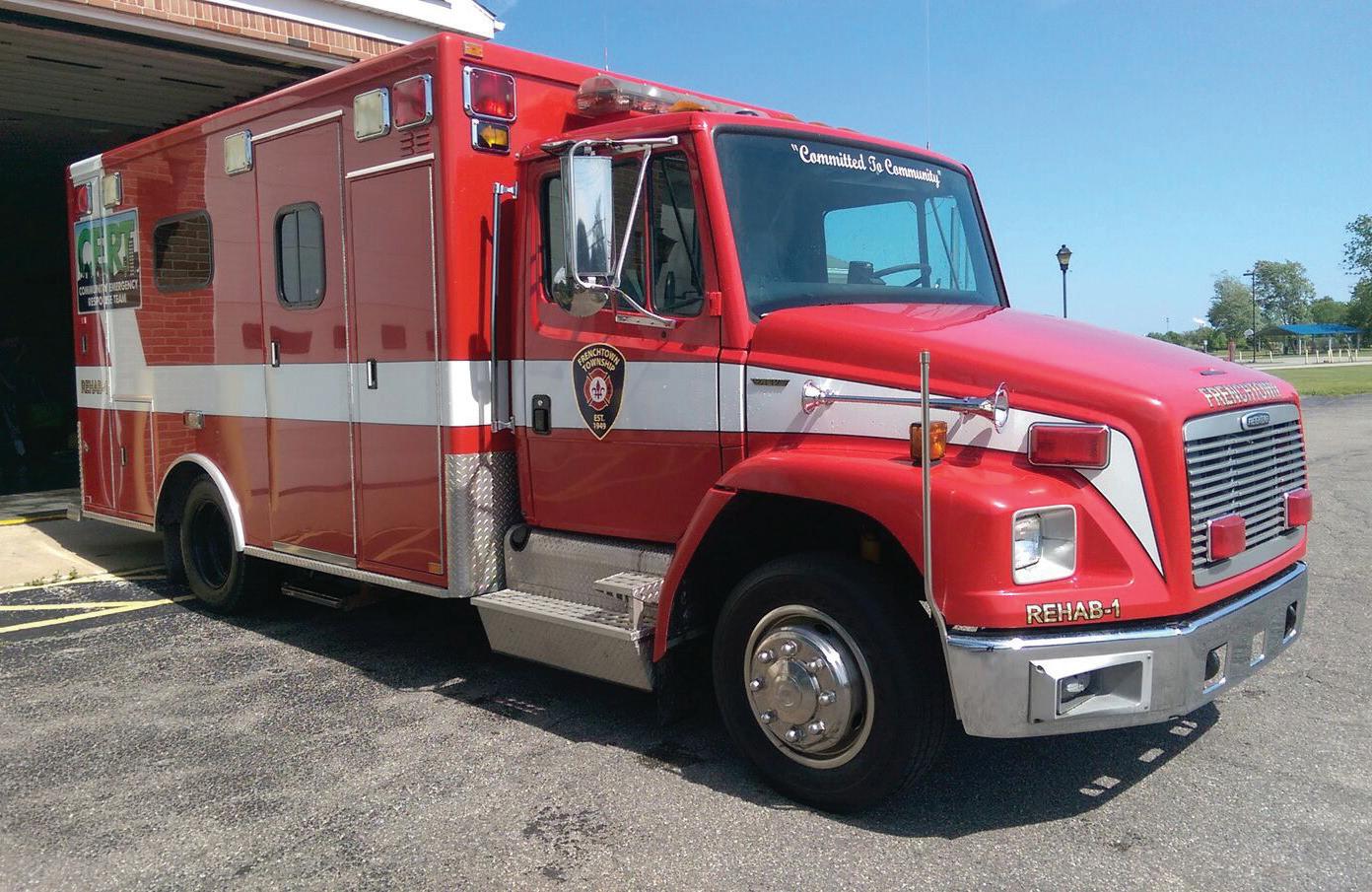
amidst a snowstorm presenting blizzard conditions. Needless to say, simply getting out of the elements became a priority, along with a mechanism for warming. Thanks to the responding CERT members, a shelter made of tarps and PVC was quickly established, and provided a primitive means of escape from old man Winter.
MAKING PROGRESS
Over the course of time, equipment has been acquired to better facilitate rehab operations and provide efficient services to first responders. One such
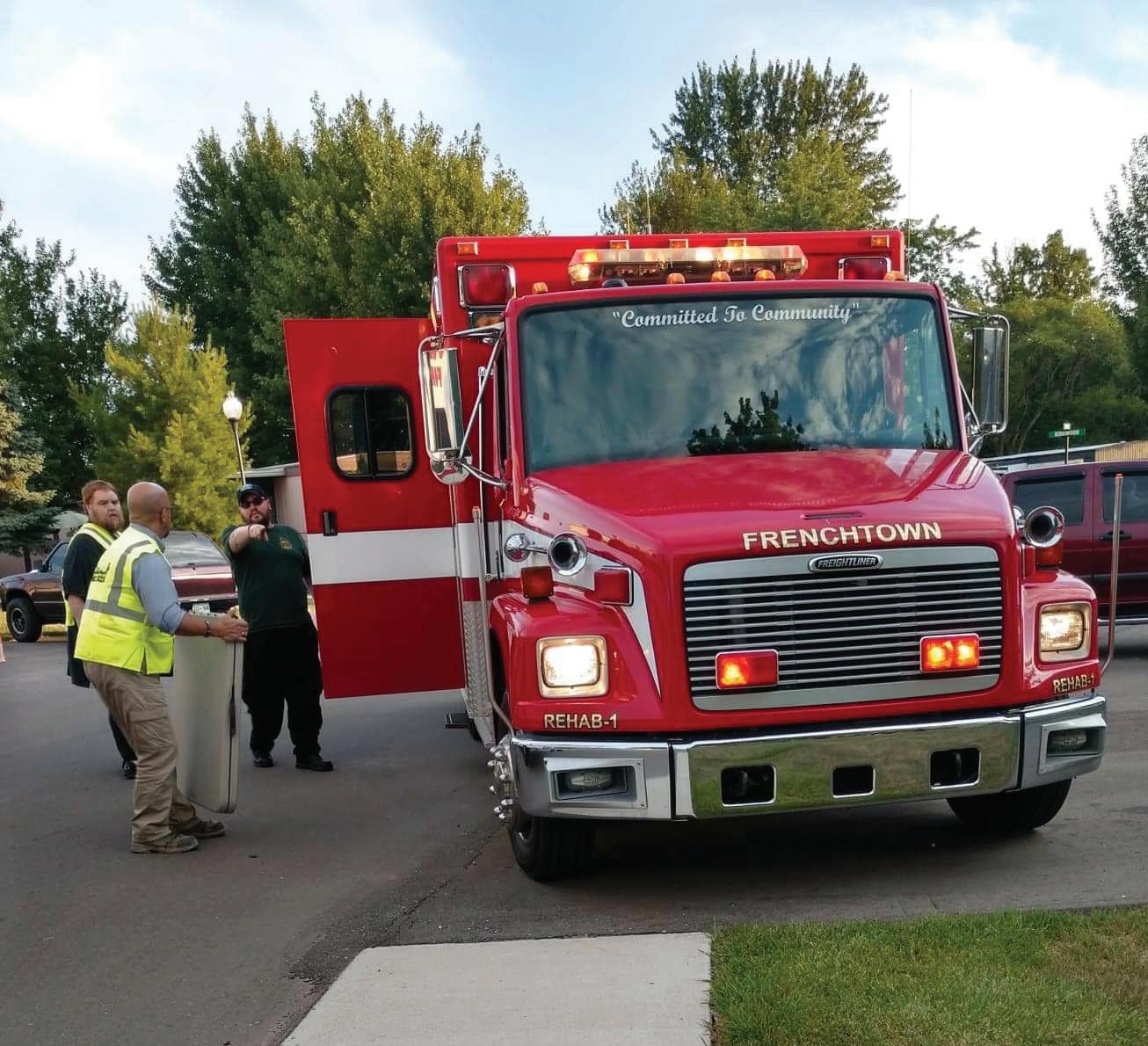
acquisition was the donation of an ambulance from a neighboring fire department which was scheduled for auction because it was beyond its service life for front line service. Gaining support and earning trust from Chief officers and leadership stakeholders is one of the keys to team survivability and sustainability. This support was essential in securing the donation of this ambulance, now known as Rehab-1.
Rehab-1 is a 2000 ambulance on an International chassis stocked with nutritional and hydration goods along with hygiene facilities, DECON equip -
ment, supplies for First Aid, largescale search operations, along with scene lighting and traffic management equipment.
THE PROCESS
In order for Frenchtown CERT Team Members to deploy with Rehab-1, they must attend Coaching the Emergency Vehicle Operator (CEVO 4) classroom training and successfully pass a written exam which is provided and required annually. For team members desiring to become a Driver/Operator (DO), a driver’s competency course along
26 CERT Responder Magazine


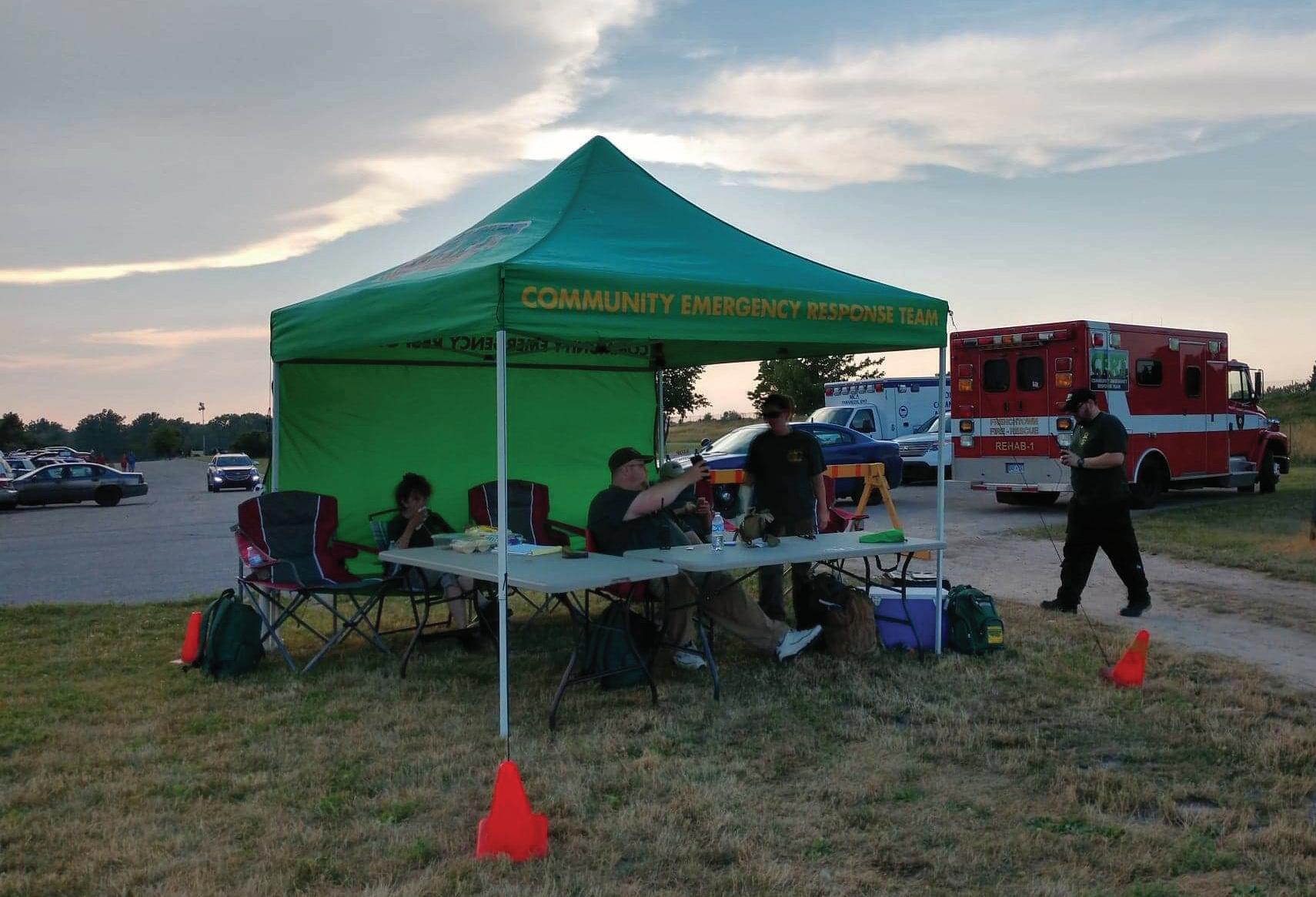
with 10 hours supervised drive time is required. After all components have been completed satisfactorily, including a recent driver’s history check, recommendations are made to the Fire Chief for final approval.
Driver/Operators are responsible for transporting the team (normal traffic) to and from the scene in a safe and timely manner. They must also know how to use each piece of equipment on the truck and where it’s located. Returning the unit to service ready condition is paramount, and is a group effort under the direction of the Driver/Operator after each deployment.

An Apparatus Supervisor is appointed by the CERT Director to coordinate bimonthly truck checks which consists of the completion of an in-depth checklist assuring Rehab-1 is service ready.
GETTING STARTED
Taking small steps of implementation is better than not taking any steps at all. Never underestimate the “Power of Ask”. Supplementing CERT’s service with rehab components can be achieved through minimal expense (well under two hundred dollars) and be organized
in easily managed, storage solutions for rapid deployment to the incident.
Many Fire Departments are operating on shoestring budgets and minimal staffing, leaving critical support roles such as rehab out of the equation. Unfortunately, responders are suffering unnecessary injury, and in some cases death, due to shortages in these critical support role functions.
This is where CERT Teams can fill the gap and come to the rescue of Fire and Emergency Service workers by providing an appropriate level of rehabilitation to our home-front responders. CERT
CERTResponder.com 27
CERT REHAB

Mahaska County CERT Rehab Program
BY JIM WALKER, DEPUTY CHIEF MAHASKA COUNTY COMMUNITY EMERGENCY RESPONSE TEAM
In 2010, the Mahaska County Emergency Manager started the CERT program in Mahaska County. It began as a teen program in a school in New Sharon, Iowa and then expanded to include a church in Oskaloosa. Both teams, which had never before worked together, went through the CERT 20 Hour class.
Both teams were involved with a few activities, and slowly started to become resources used by first responders. Some tasks included helping move people that were flooded out of their homes, passing out water in a town whose water plant was shut down due to floods, and traffic control.
In 2016, the teams got their 501c3 status. With this they were able to purchase necessary supplies. By 2017, the teams were increasingly being utilized by first responders to acquire bottled water and hand it out when needed.
On one hot summer day with the temperature over 100 degrees and the humidity at 96%, the team was called to assist in handing out water during a fire in a small town in the county. The incident commander of the fire was not sure at the time how long they would need to be there. It was large enough that other towns were called in to help. The Mahaska County CERT team responded with coolers of cold water and set up an area for firefighters to get the water. There was a total of 3 members that responded. The team had never been called to such an event, and the outcome was uncertain.
The fire escalated to the point that the first responders were becoming overheated. While the assistant emergency manager
and Deputy Chief Jim Walker headed back to the fire station for some cooling vests and a cooling fan, Jane Walker and Terri McElroy continued to help. Towels were handed to them by a townsperson, and the ladies tore them into strips and started soaking them down in ice water from the coolers.
Some of the responders were so overheated that the cold wet towels were not helping, and had to use the ambulance for IV’s to help get fluids back into their bodies. Jane and Terri continued to wet and place the cold rags on those who were trying to rest and replace fluids. When the fan and the cooling vests arrived, they were set up and used.
As the event was coming to a conclusion, the team members took time to cool down and rest before starting to clean up. While resting, Jane remarked that something more needs to be done to help protect the lives of the responders. Cold water and rags were not enough if the CERT teams were going to be called in for this type of event.
Originally, the teams were trying to help people when they faced a disaster by giving them funds for necessities or shelter. There was just a small operating fund, and grants will not support this type of program. Somehow, money needed to be
28 CERT Responder Magazine
Mahaska County CERT Team members train on the equipment for a rehab trailer. The trailer will be taken to emergency situations to help keep responders healthy during extended operations. (photo by Mahaska County Emergency Management)
raised to be able to help people in need, as well as the firefighters.
Jim Walker worked for a company that had grants available for projects in the communities in which the team members live. He applied for and received a grant to start putting together equipment for the CERT teams’ mission. The emergency manager had a trailer that was available, and it was not being used for anything. The trailer needed some modifications, but it could be used for rehab. With the emergency manager’s help, the trailer was modified with a cooling/heater unit on top, and a folding seat was installed.
As the trailer was being modified, Jim heard about an organization that gives grants to help the community. A presentation was given to that organization, and the CERT teams were granted enough money to pay for all the trailer modifications, as well as a list of equipment that was needed to complete the trailer. This was the start of the rehab program. The teams then began searching for other available safety-enhancing equipment and successfully applied to more organizations for grants to help
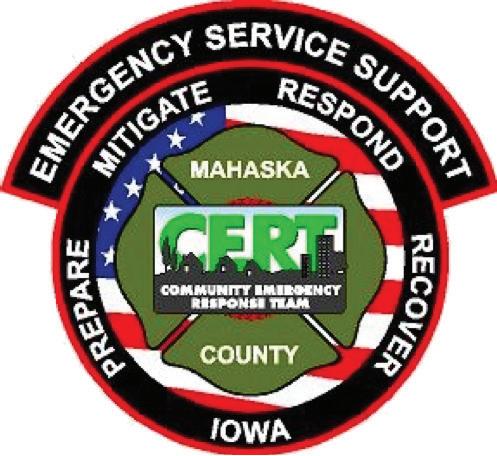
with these purchases. What started with rags and coolers of ice water now became aid for up to 20 responders at a time with the rehab trailer!
Since the acquisition of the trailer, the CERT teams have responded to 4 fires. They have even been asked by another county to set up for rehab during an air show.
On Super Bowl Sunday, the teams were asked to help during a large fire. It was so cold that the water on the firefighters’ coats and equipment was freezing. After that fire, the teams were honored by the fire chief.
He told the mayor of the city about what they had done for all the responders at this large fire. The teams were presented with a letter of recognition from the mayor, thanking them for all their help.
The Mahaska County CERT Rehab Program continues to learn and respond when called. They are now on the paging system of 911, and are called out second after the fire department, at the fire chief’s request. These teams have earned a place as part of the responder community. CERT
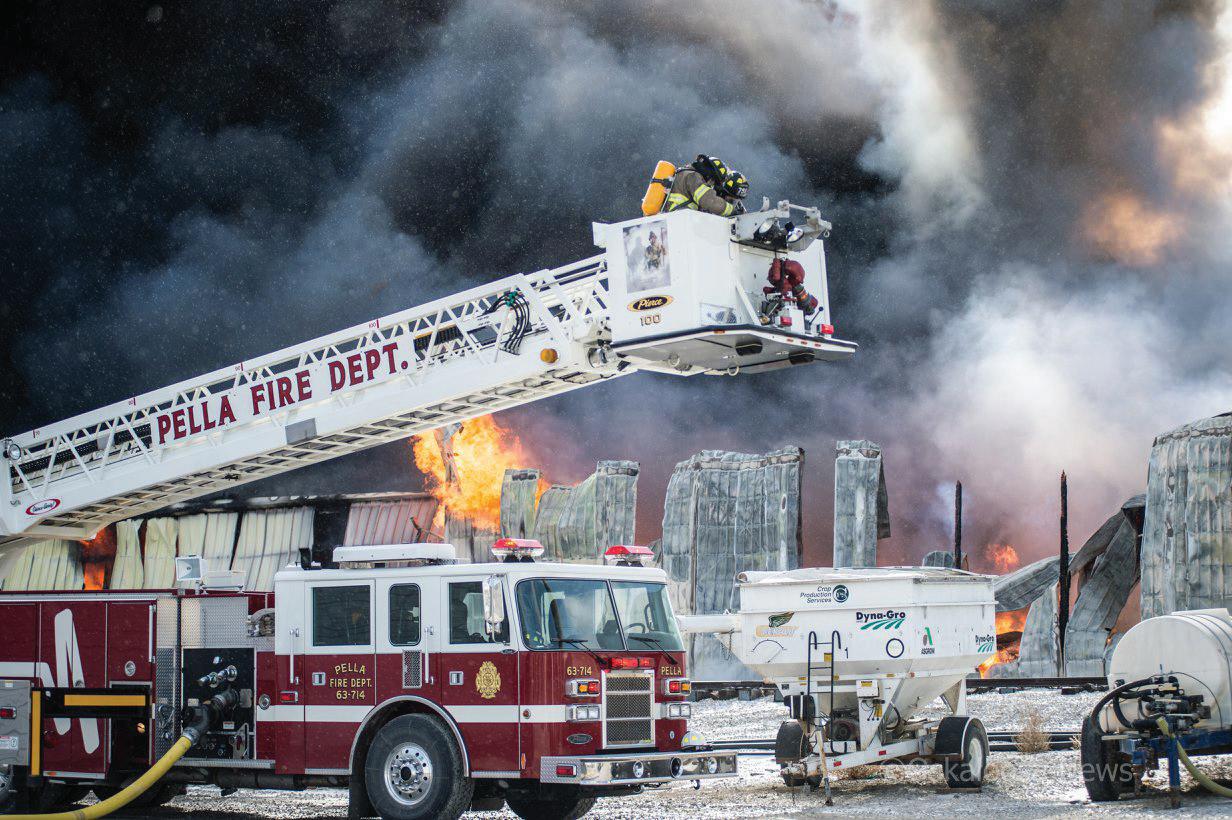


CERTResponder.com 29


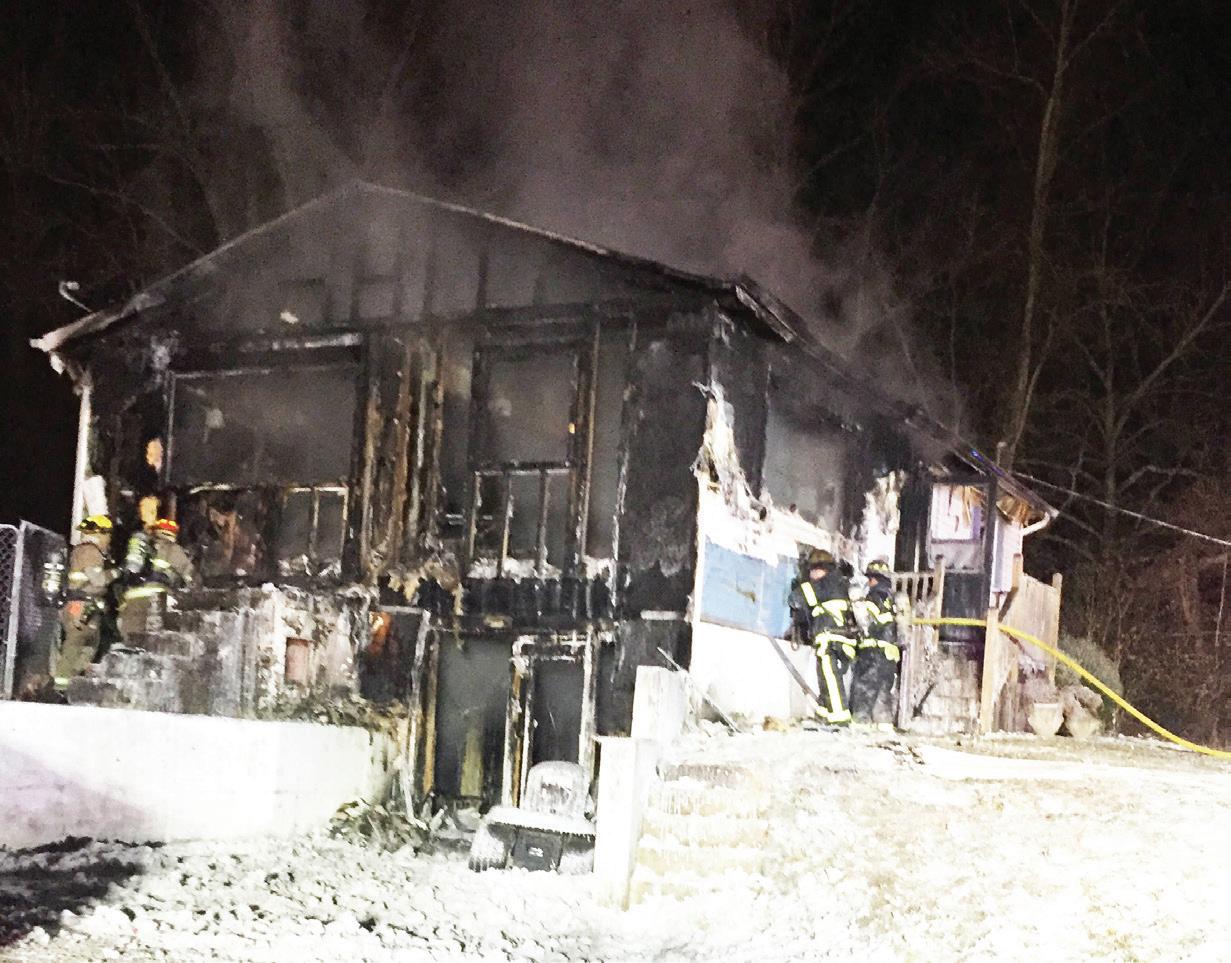
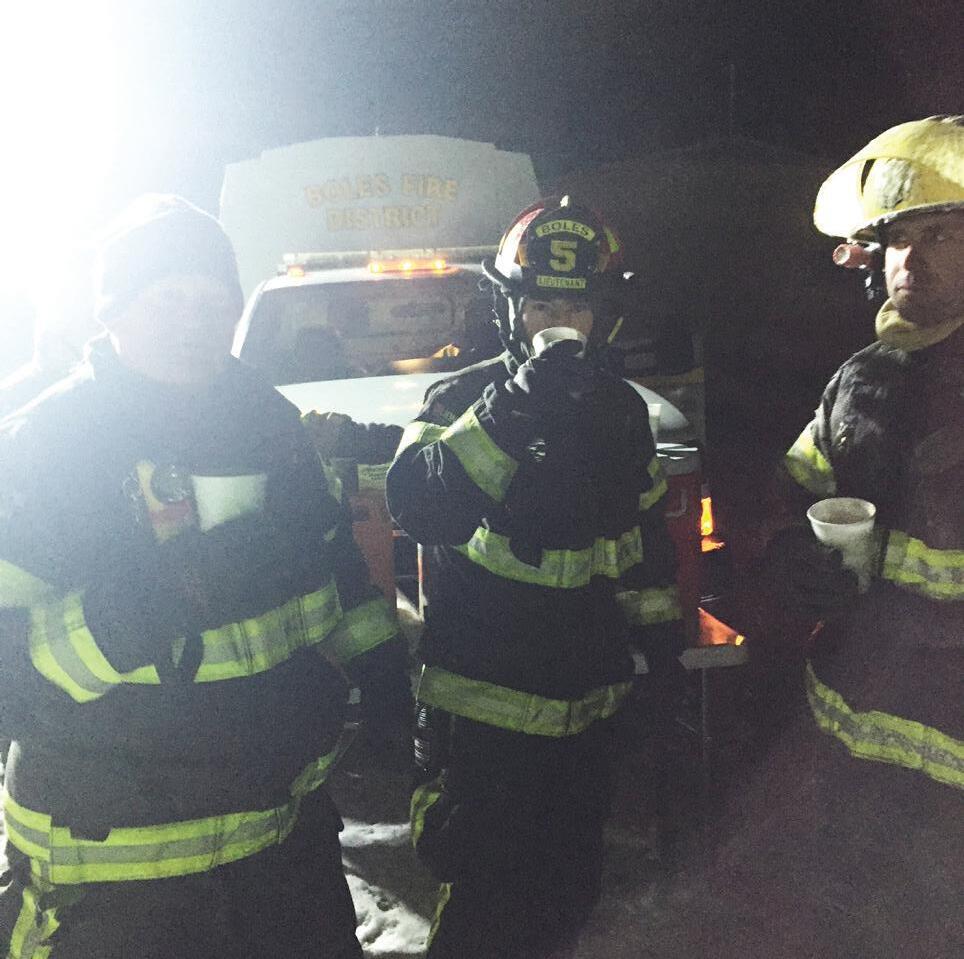
BOLES FIRE PROTECTION DISTRICT
CERT REHAB OPERATIONS
BY TOM SULLIVAN
The Boles FPD CERT was organized in 2014 with the first 20 hour basic class given by Captain Clare Swann and firefighter John Hudson, BFPD. Several classes followed over the next few years. Monthly meetings/training sessions are ongoing. The meetings are held at BFPD Station 3 in Villa Ridge Missouri, where the BFPD Rehab unit (R&R) is located. The rehab unit consists of a trailer equipped with a fully enclosed washroom (heated and air conditioned), generator, coolers, water jugs, and various rehab supplies. A second vehicle, a multi-purpose four wheel drive utility truck with enclosed cargo area, serves as the tow vehicle and carries other related rehab equipment.
30 CERT Responder Magazine
CERT member setting up rehab at fire January, 2018 with zero temp
CERT REHAB
Firefighers rehabbing at fire January, 2018
The R&R unit was originally staffed by members of the Auxiliary, but in 2016, staffing of the R&R unit was augmented by members of CERT. Since then, several members of the Auxiliary have become CERT members.
The R&R unit members follow the NFPA # 1584 standard on Firefighter Rehab Operations. This also involves working with the Meramec EMS units that are on the scene. They are primarily monitoring firefighters’ vital signs and observing for any signs of distress when they report to the rehab area. The BFPD CERT team also observes members as they rehab, and report any suspected problems to EMS, and/or Incident Command.
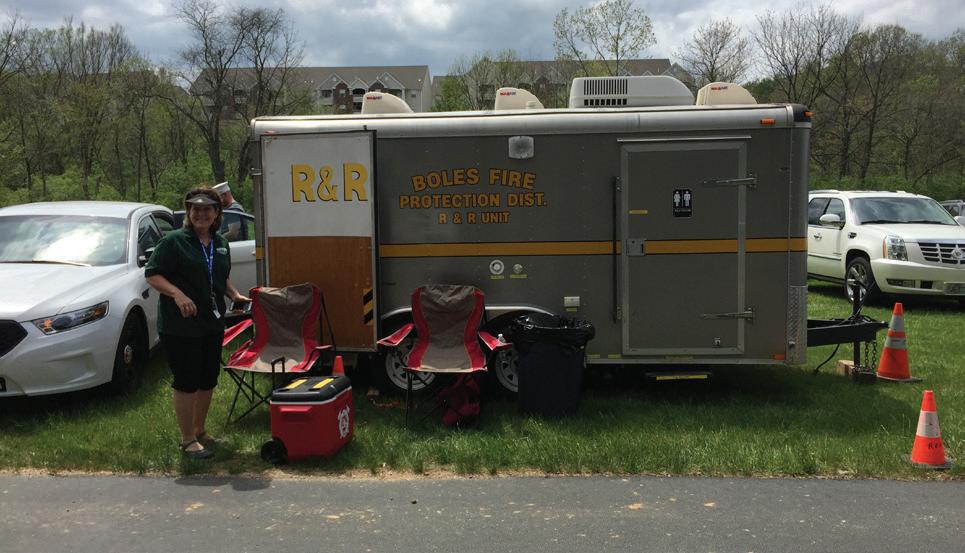
A fire on January 1, 2018 was a test of their ‘’Winter Ops” plan—the tempature was right at zero! The fire was a well involved house, requiring a couple of hours to extinguish and overhaul. A CERT group in Outagamie County, Wisconsin was contacted for suggestions, since they have a lot of experience with cold weather. Their idea was to use a 2/3 gallon dispenser-type coffee maker (without the coffee) to heat up water and add bouillon cubes for instant broth. The BFPD team already had insulated dispenser containers, so they heated water on the firehouse stove, put it in containers, and went to the scene. With the hot water, they were able to provide a choice of drinks, soups, broth, etc.
Notification to respond is by text message, pager, or phone to available members. When reporting to Station 3, members call in to the “I am Responding” network, which allows them to see who is involved with the incident via computer.
The R&R has responded to many fires, incidents, training drills, and special events over the last few years. Often the initial response is the support truck (or a personal truck with basic supplies) if it appears that it will be a relatively short incident (an hour or so). If the incident escalates, the trailer can be deployed. All responses are made without warning lights or siren, and all traffic rules are obeyed.
Due to the varied climate in Missouri, provisions are made for both extreme hot and cold weather responses. A supply of blankets, hot drink dispensers, and hot soup & broth are also provided if needed. During periods of extreme weather, winter and summer, the team tries to ensure that at least a couple of members are available to respond.
The CERT Rehab members have worked several structure and brush fires in the last couple of years.
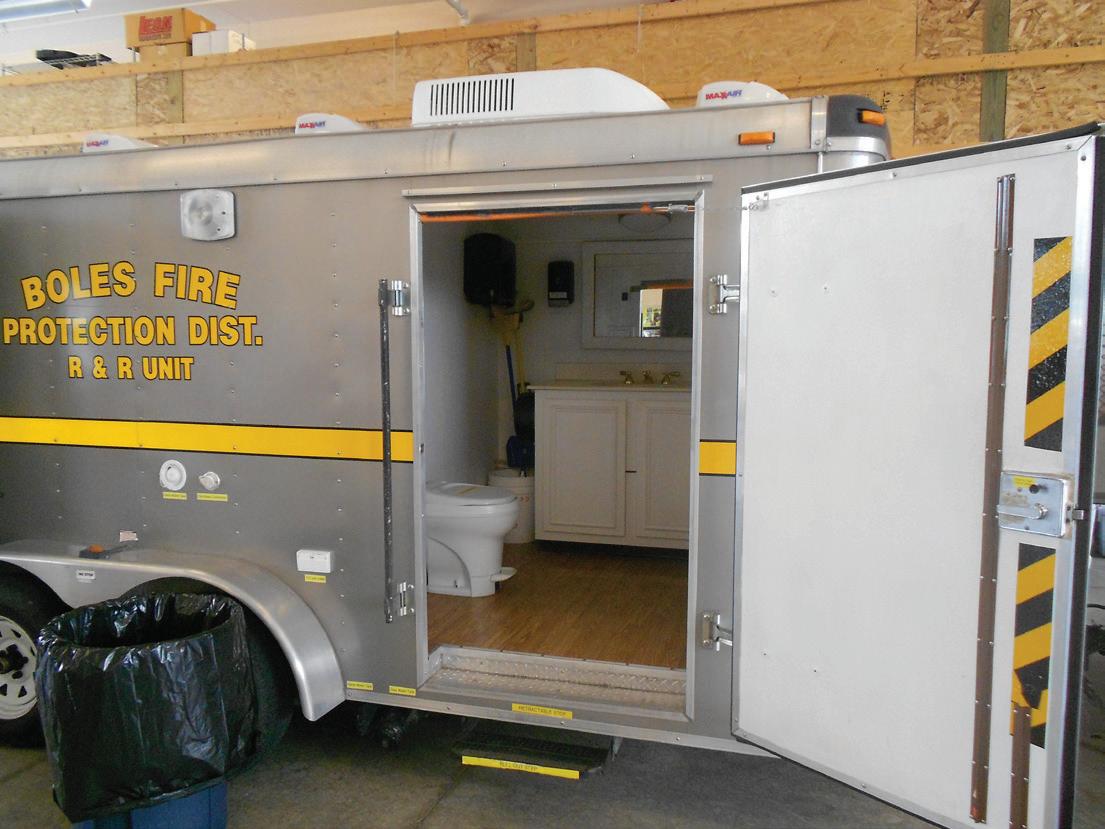
During the last extreme hot summer, CERT Rehab worked another structure fire not far from the winter fire. There is a second rehab supply base at Boles Station 2 in Labadie, with cases of bottled water and an ice freezer. The team responded (in a private truck) to the summer fire from station 2 to save travel time back and forth across the Boles Fire district, which is a large part of Eastern Franklin County.
In the spring/summer months, there are always a number of brush/field fires. The team monitors the radio, and contacts Franklin County Fire Dispatch on a private line to ask if rehab is needed, which it often is.
In addition to emergency responses, the CERT team has supported many Boles training events at the training tower and in the field, “live burns”.
The BFPD CERT assists in other logistical needs as well.
All CERT members are issued official ID cards. This ensures that when responding to incidents, they will fit within the IMS structure. The cards are turned in at the Command Post, and retrieved when released from the scene. CERT
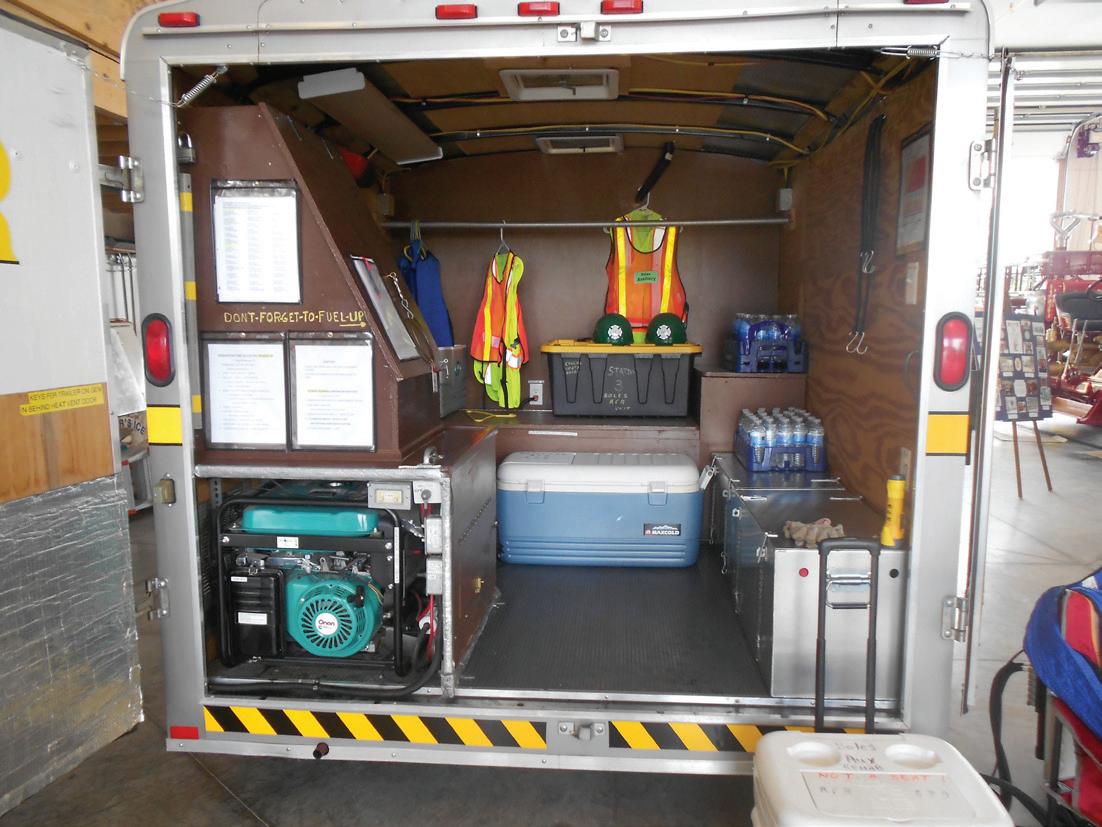
CERTResponder.com 31
CERT staffing rehab unit at funeral detail
Rehab unit
Rehab unit
WINTER EVENTS
DECEMBER:
National Drunk and Drugged Driving (3D) Prevention Month
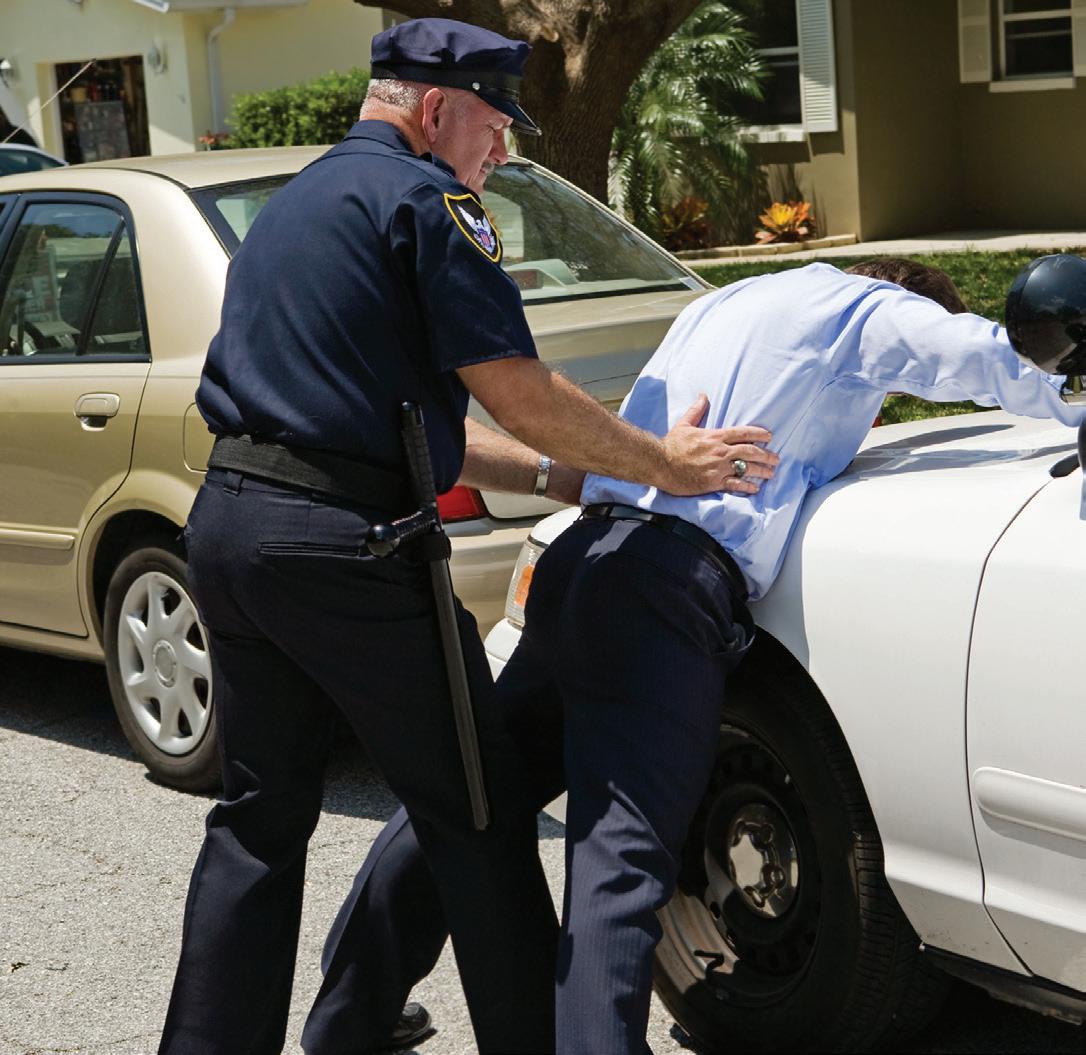
JANUARY: National Blood Donor Month

FEBRUARY: American Heart Month

32 CERT Responder Magazine
GROUND FLOOR OPPORTUNITY FOR THE RIGHT PERSON!
CERTResponderMagazine is searching for an aggressive and experienced salesperson to present our magazine to potential advertisers. This position is commission driven with incentives.
CERTResponderMagazine is quickly becoming the go-to source for CERT groups to share stories, information, and training tips.
If you feel you have what it takes, please send your resume and contact information to Bob@certresponder.com


CERT on the road



If you have a picture of you or your group holding a copy of CERT Responder Magazine while traveling, please feel free to share it with us so it can be enjoyed by other CERT members. Send your submission to : certstories@certresponder.com. Any picture that we place in the magazine, the sender will be rewarded with a CERT Responder Magazine T-shirt.
CERTResponder.com 33 JOIN OUR
TEAM!



34 CERT Responder Magazine CERT MARKETPLACE AGOOD Graphic Design & Creative Direction • Magazines • Publications • Newsletters • Brochures • Advertising • Much More 314.275.2208 shermanstudios.com IS HARD TO FIND Fran Sherman For Design You’ve just found one. tiger@tigertravel.com 314-968-4410 800-875-4410 7967 Big Bend Blvd. Webster Groves, MO 63119 Making Dreams Come True since 1972 TIGER TRAVEL SERVICE Contact Us Today! www.certresponder.com/advertise New! RTIC 30 oz Tumbler $19 and Medical Trauma Kits available $49. If interested call 636-387-7150 FOR SALE


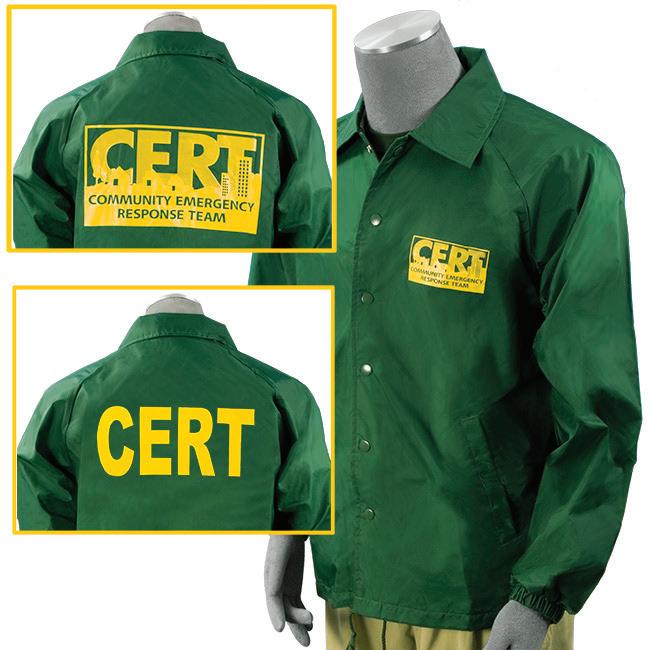
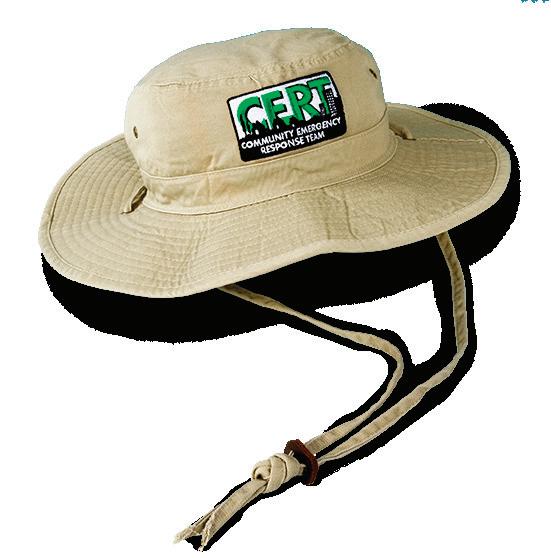

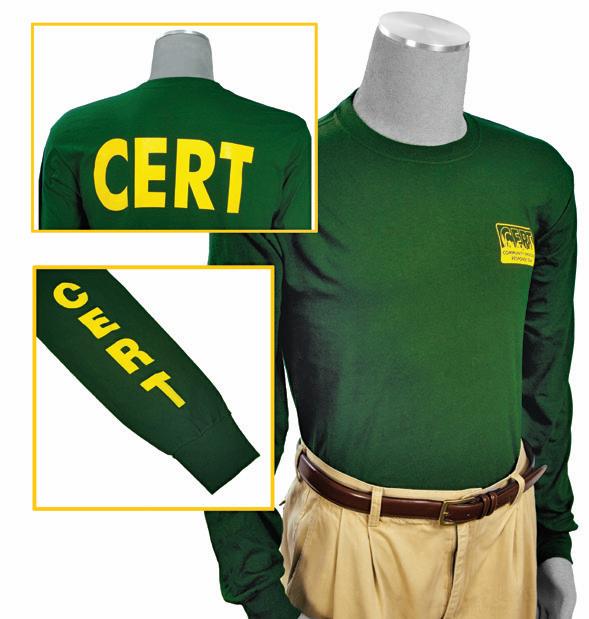
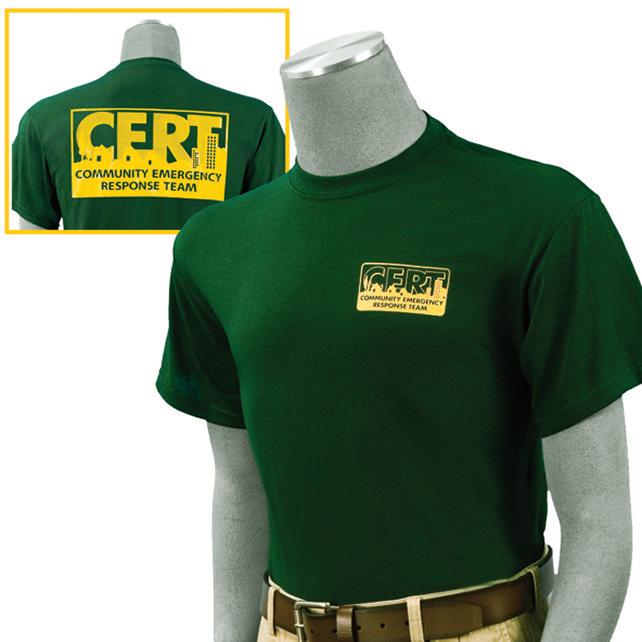


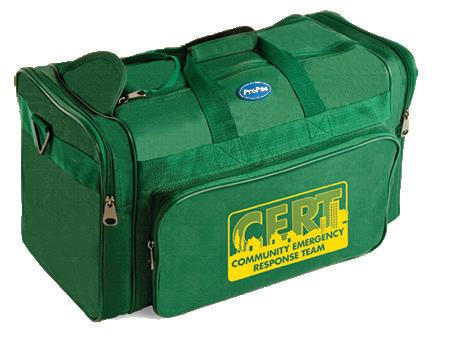
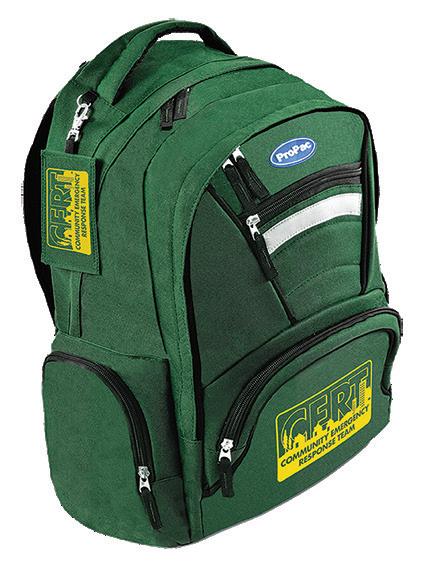
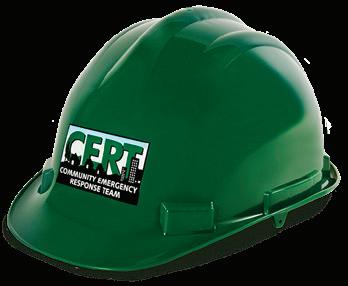
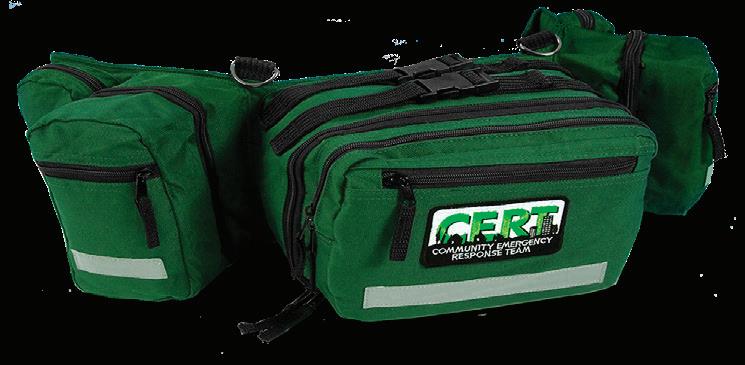
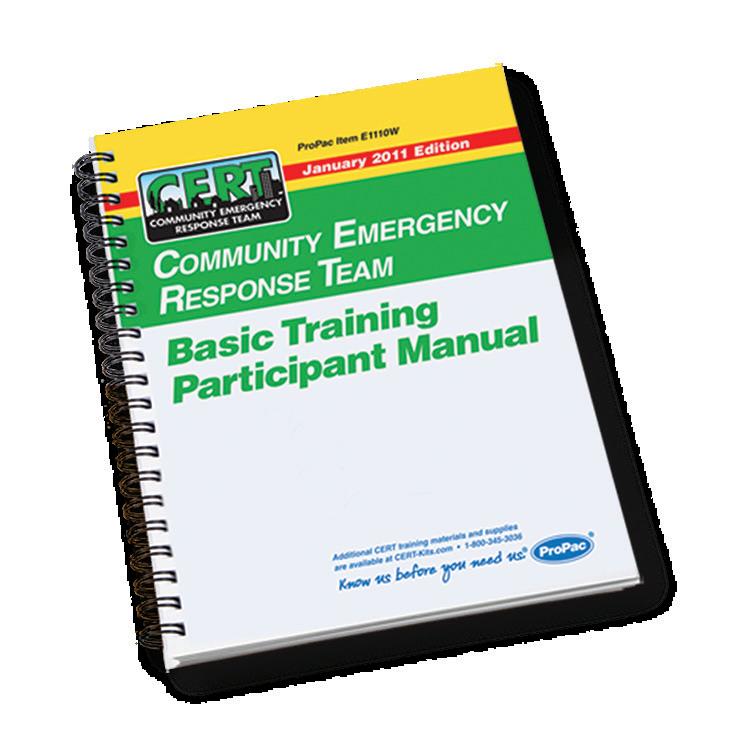

1-800-345-3036 propacusa.com More CERT Teams Count On ProPac Than Any Other Brand No matter how big or small your response call may be, ProPac can outfit your team with precise and reliable equipment, tools and supplies for any emergency situation. It’s vital. It’s dependable. It’s what you need. CERT Supplies and Gear From ProPac ProPac First Responder Pack Item D2018FP ProPac First Responder BackPack Item D2012-CERT ProPac CERT Duffle Item D2006-CERT ProPac CERT Hard Hat Item C2004-CERT CERT Apparel CERT Gear and Supplies CERT Participant Manual* 2018 Edition CERT Participant Manual for Basic Training. Custom orders available. *Also available in Spanish. CERT Participant Manual On Flash Drive A great way to take your basic training manual to class or into the field with your notebook computer. Item E1110FD Item E1110W
Item C2001 ProPac CERT Cap
ProPac CERT L-Sleeve T-Shirt
Shirt ProPac
Oxford Shirt Item C6751 Item C6080 ProPac CERT Coach's Jacket Item C5010 Item C2020 ProPac CERT Bucket Cap
ProPac CERT Polo
CERT
ProPac CERT S-Sleeve T-Shirt
ProPac CERT Sweatshirt Item C5201 Item C5050-CERT Item C6076G Item C6904
ProPac CERT Polar Fleece
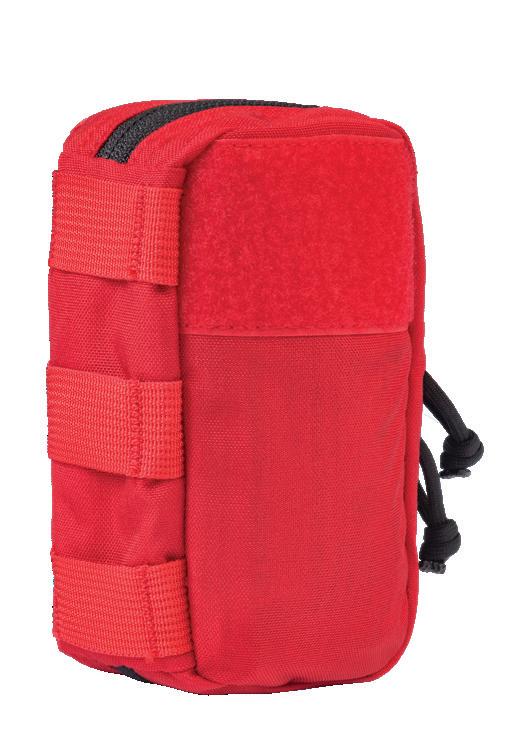

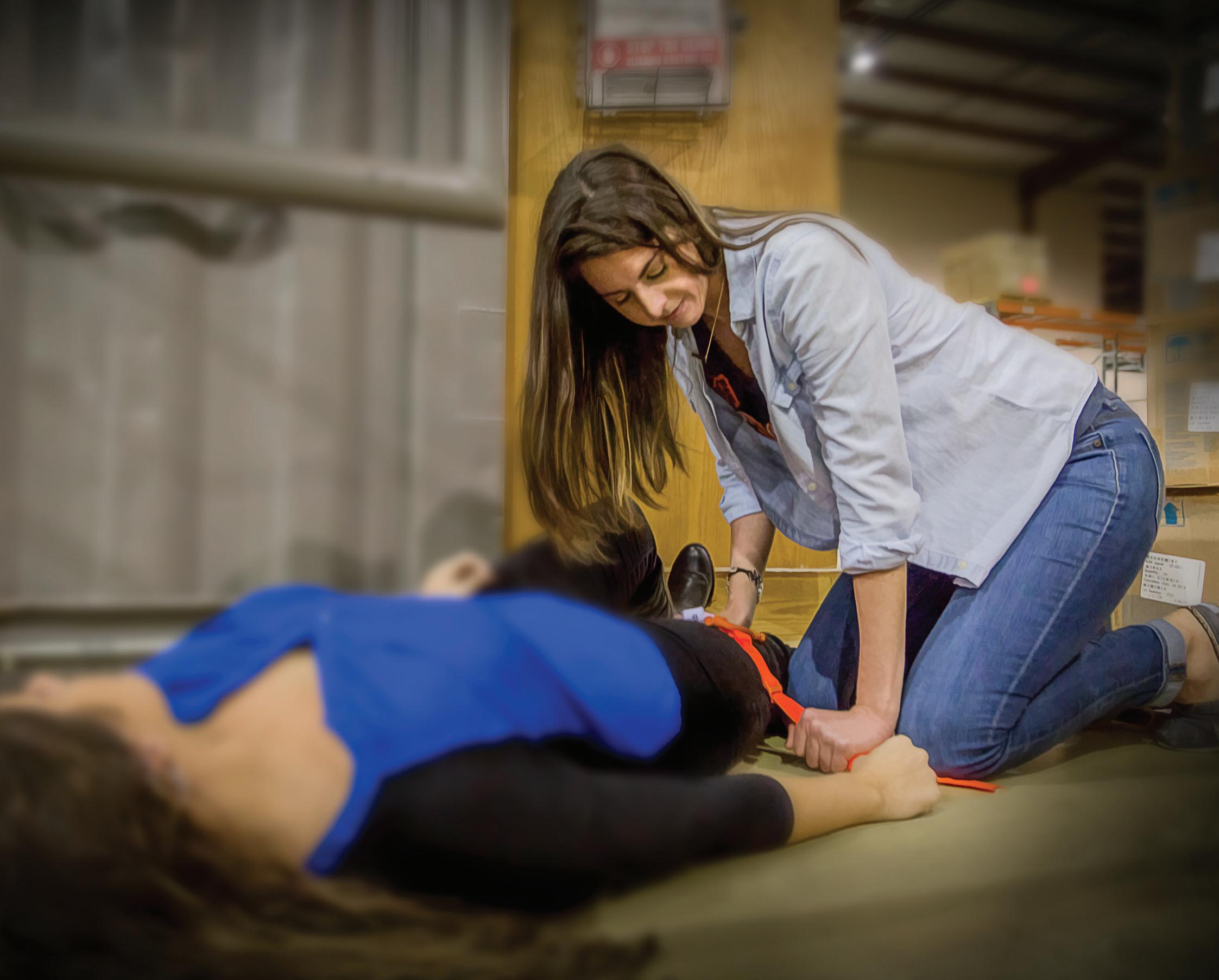

Ultra-compact First Aid Kit empowering First Responders with an Every Day Carry option containing the most requested point-of-wounding equipment packaged in the smallest space possible Explore all your options at NARescue.com COMMUNITY PREPAREDNESS M-FAK Mini First Aid Kits Bystanders can make a difference... Be Prepared Help save a life with what you carry! REV080918





























































































